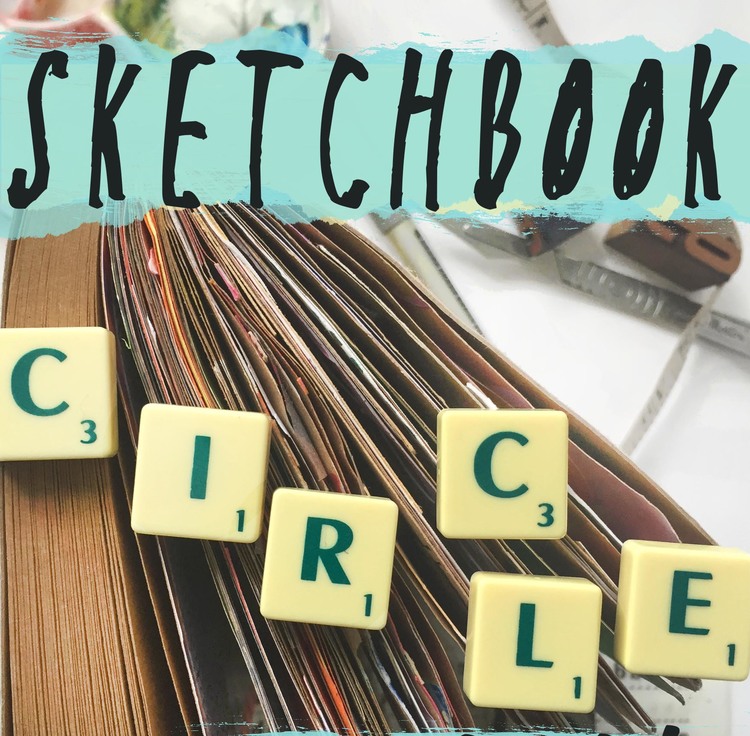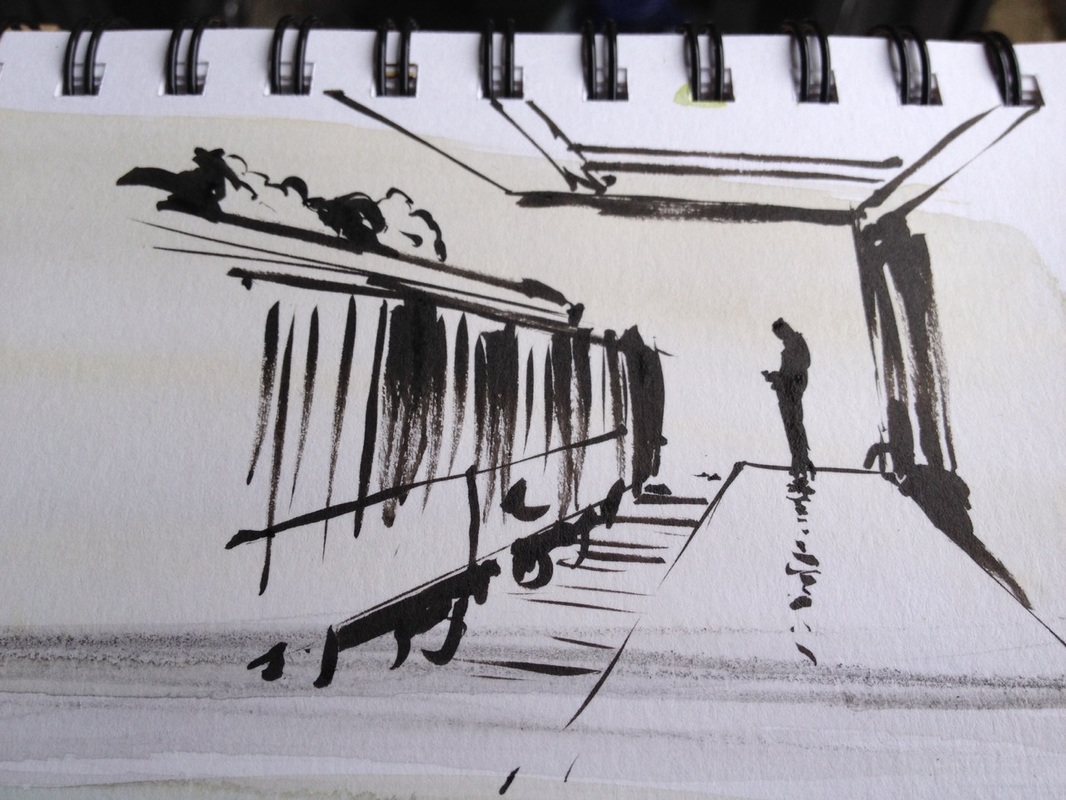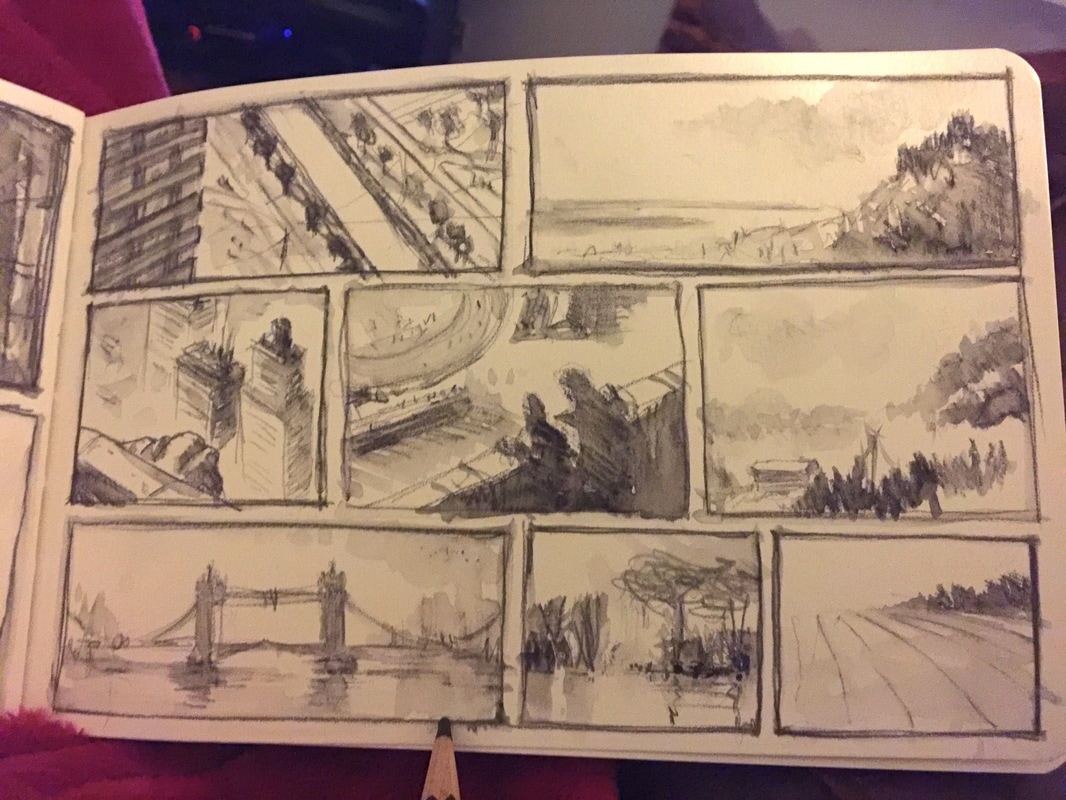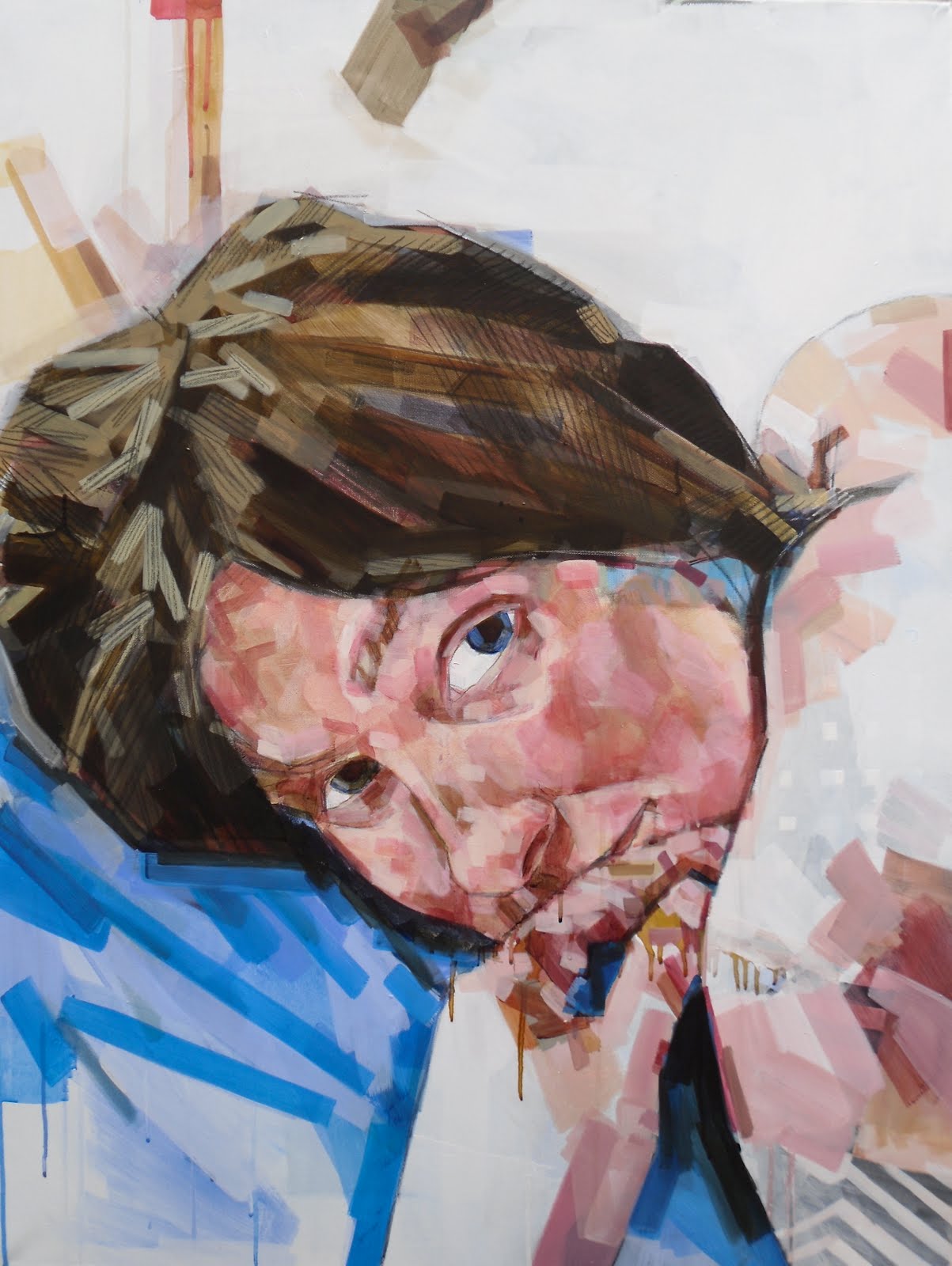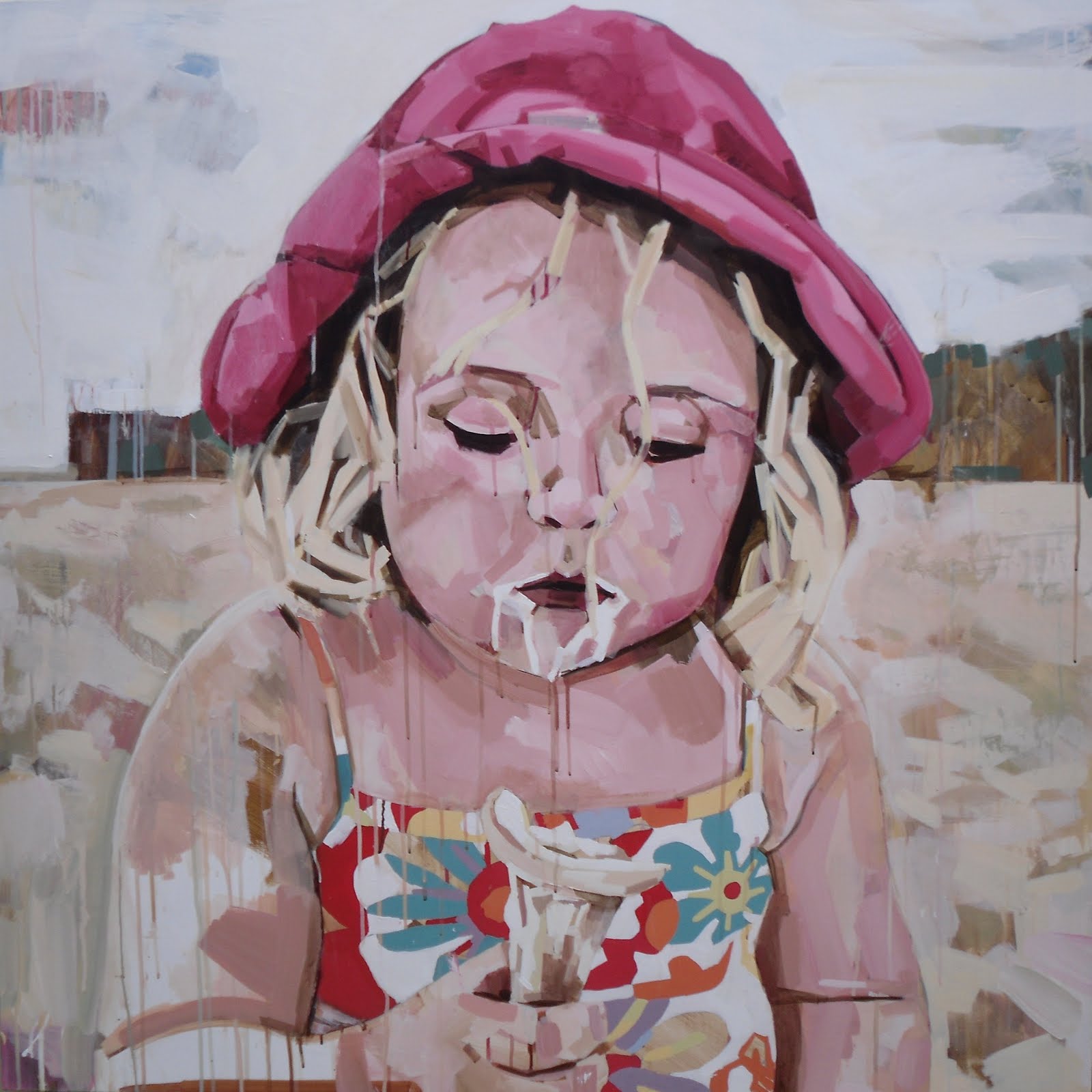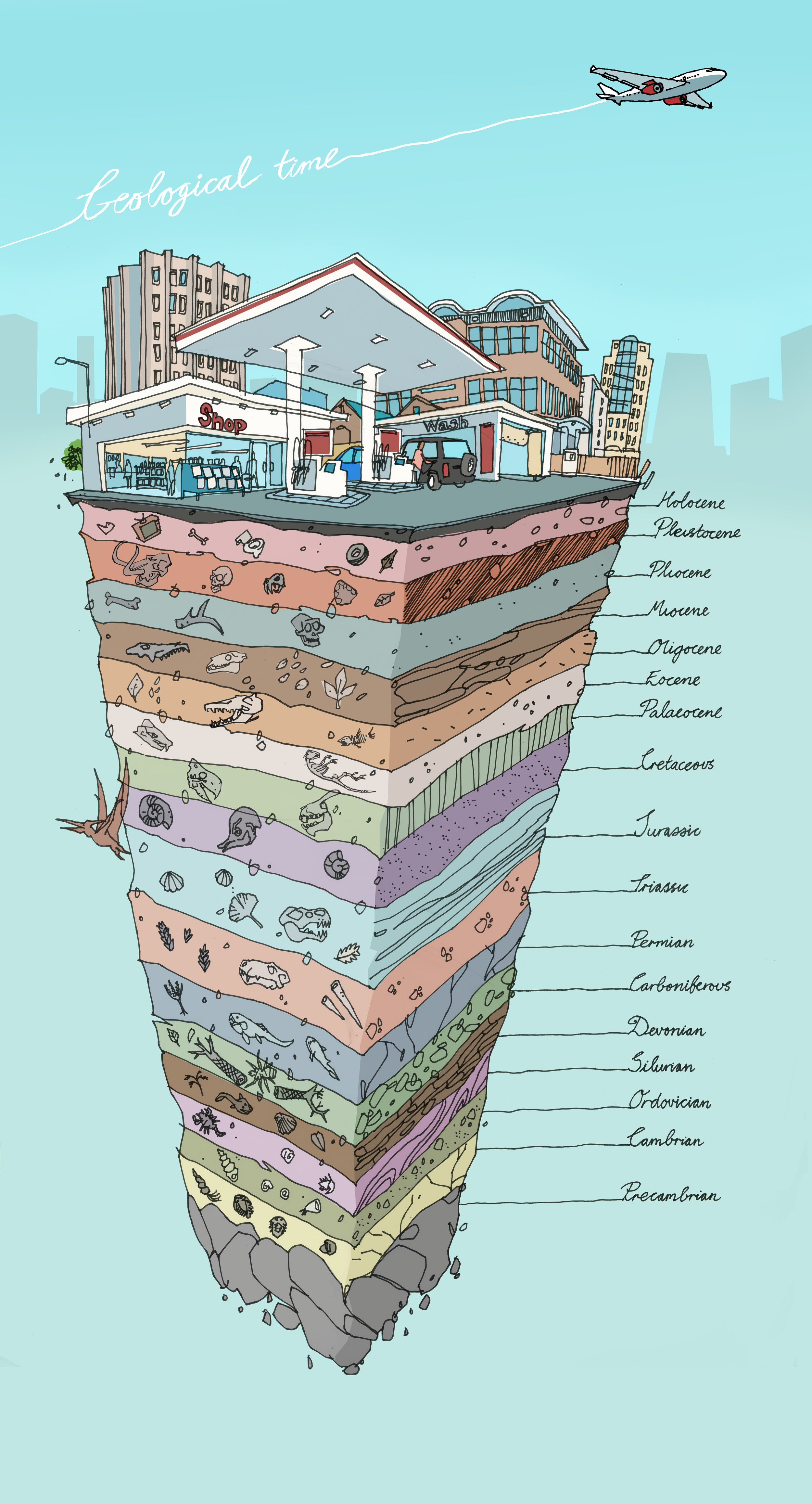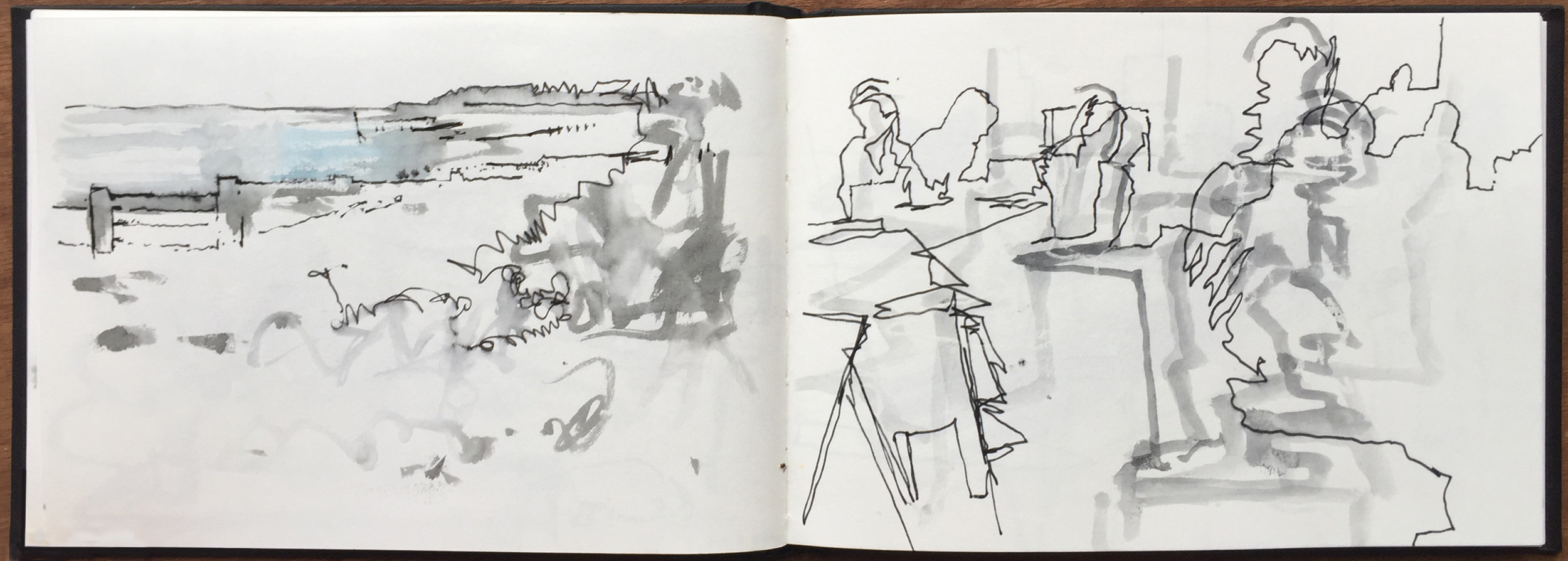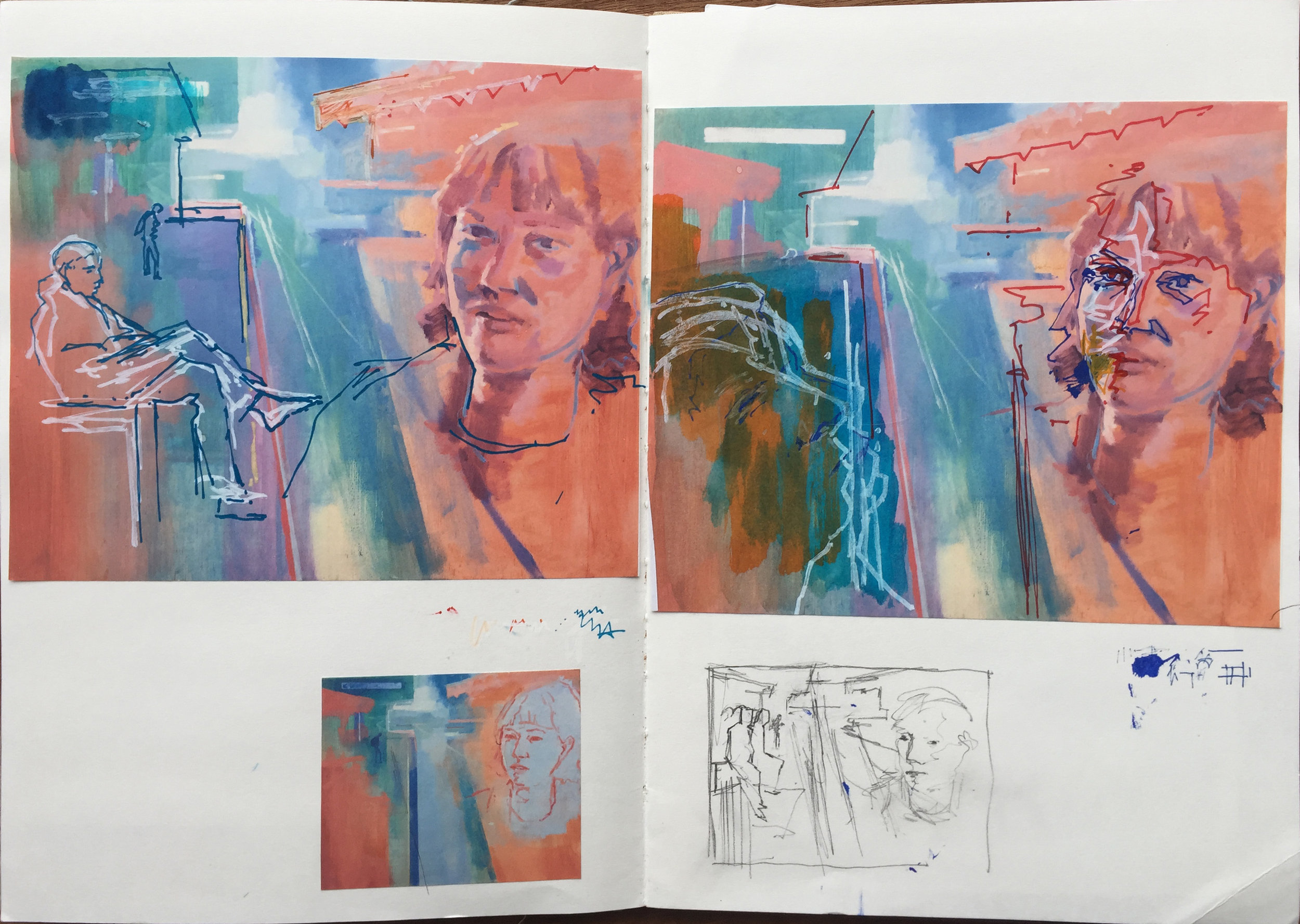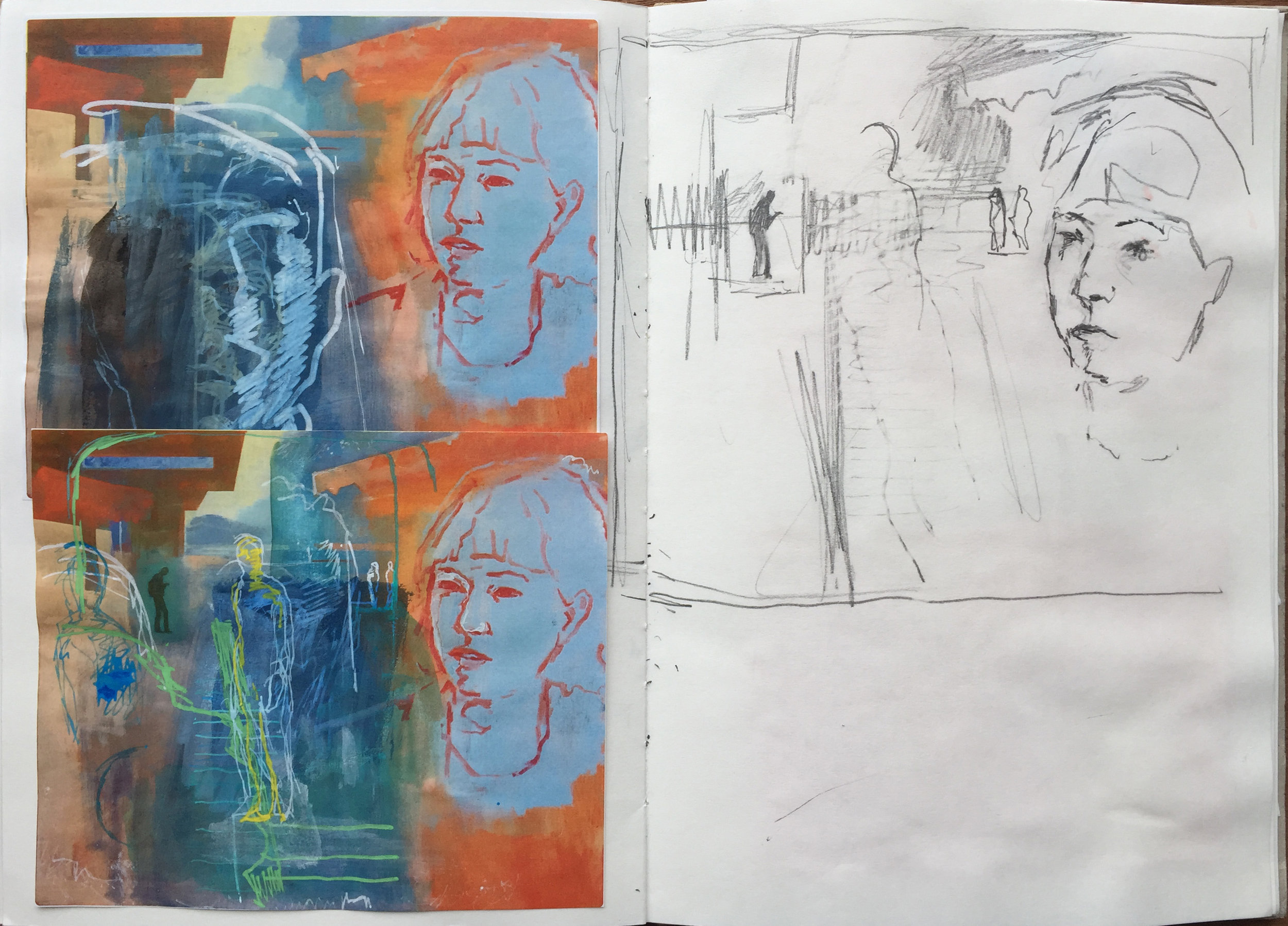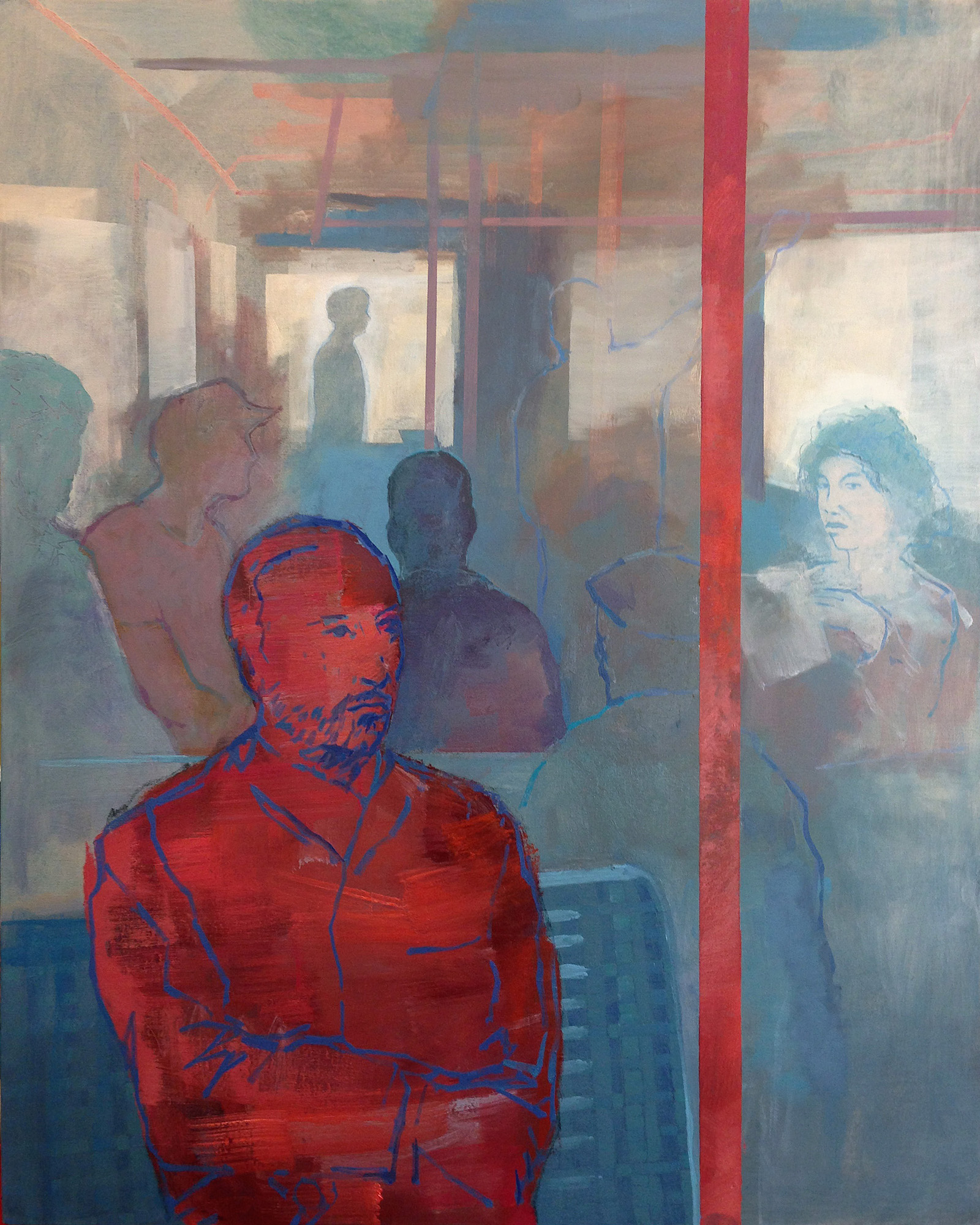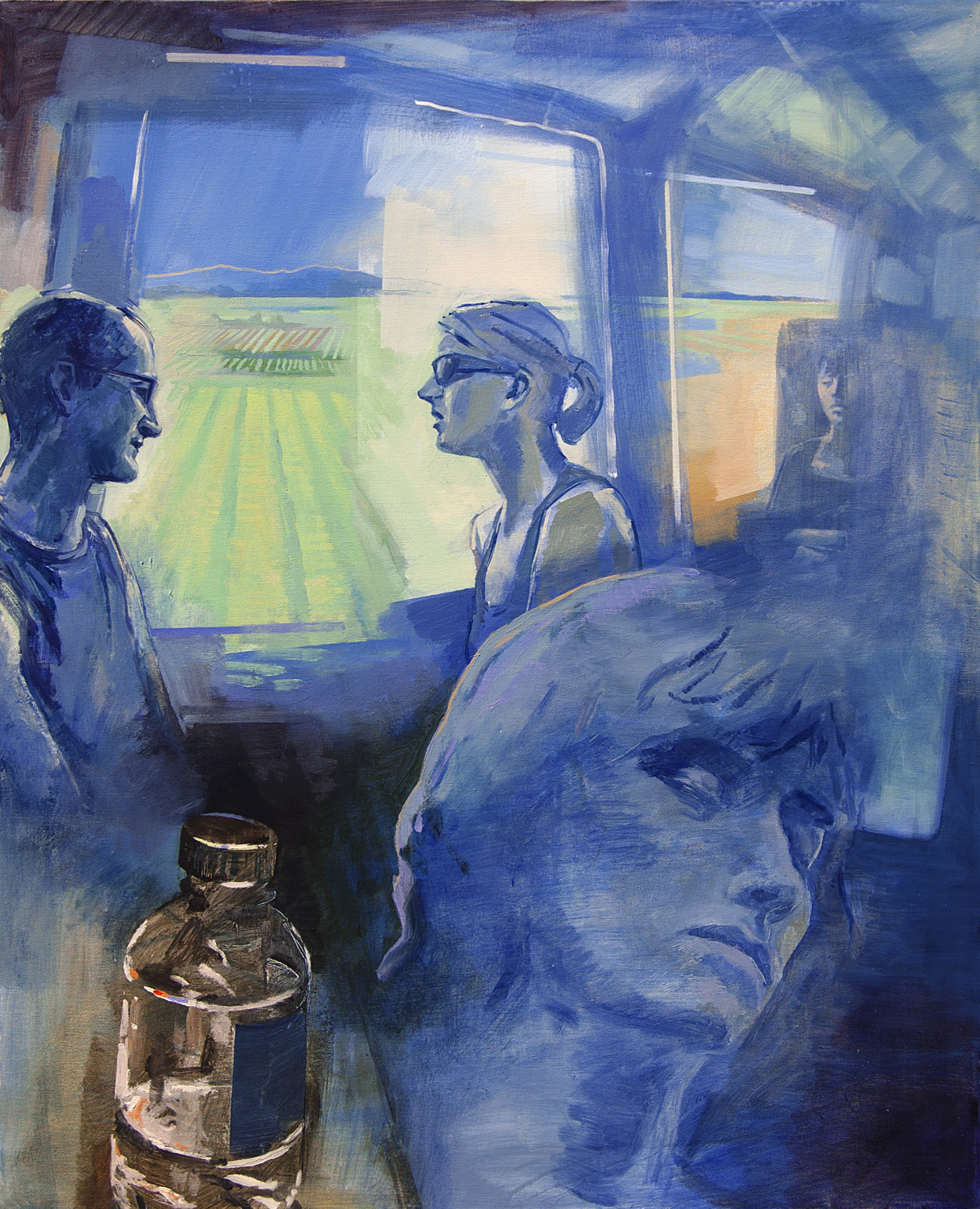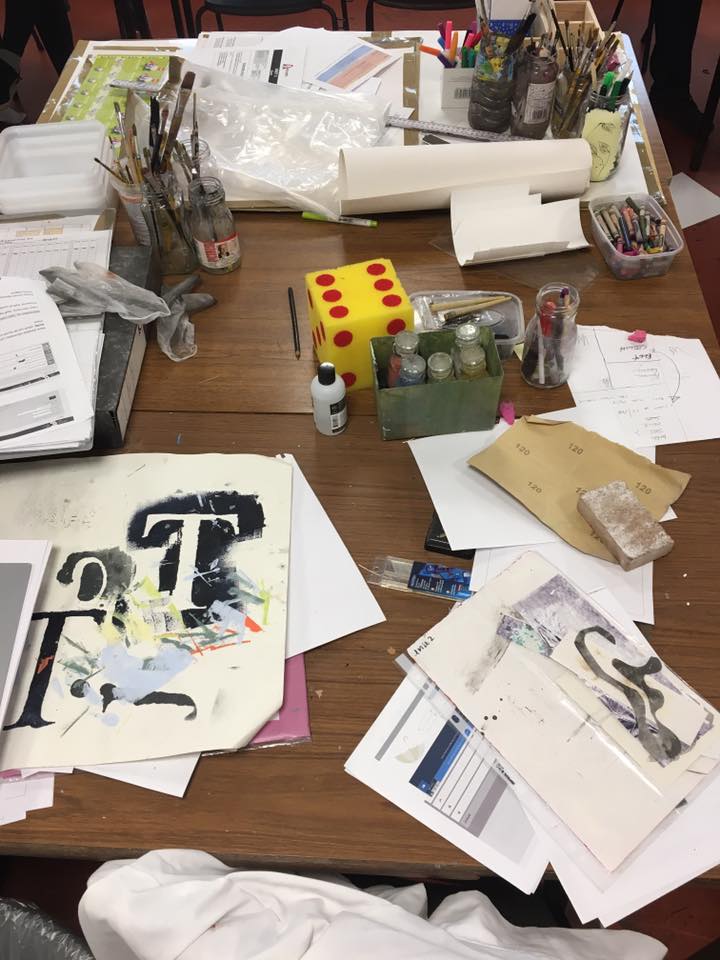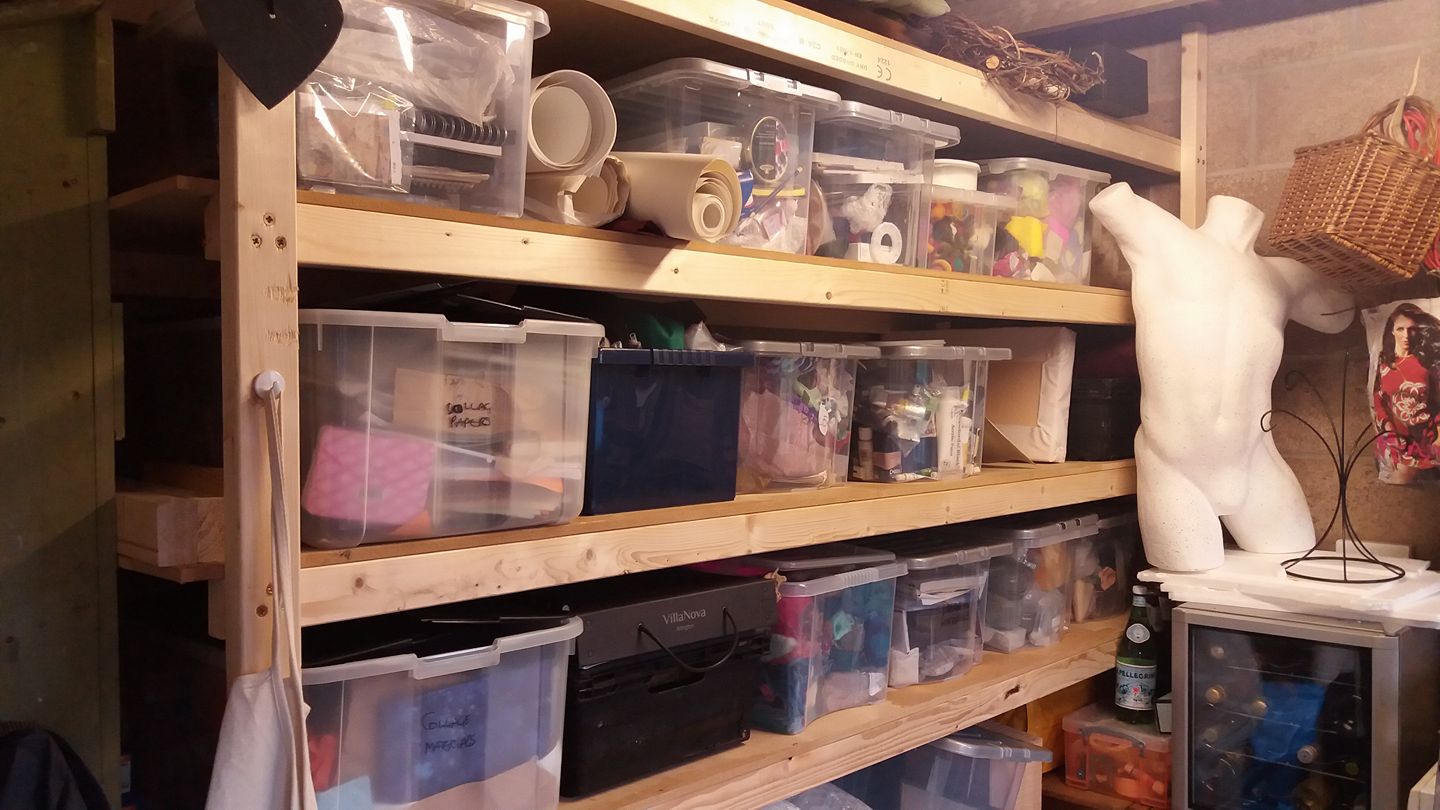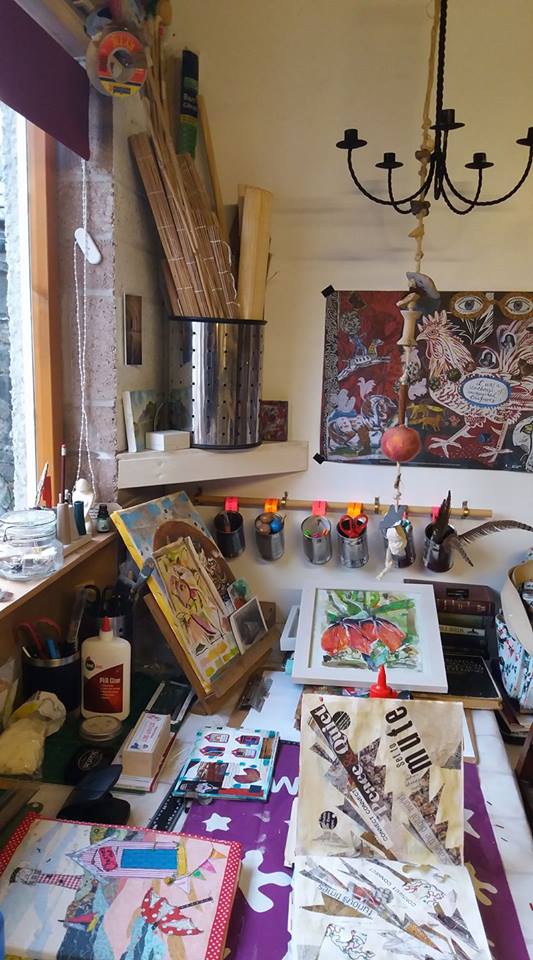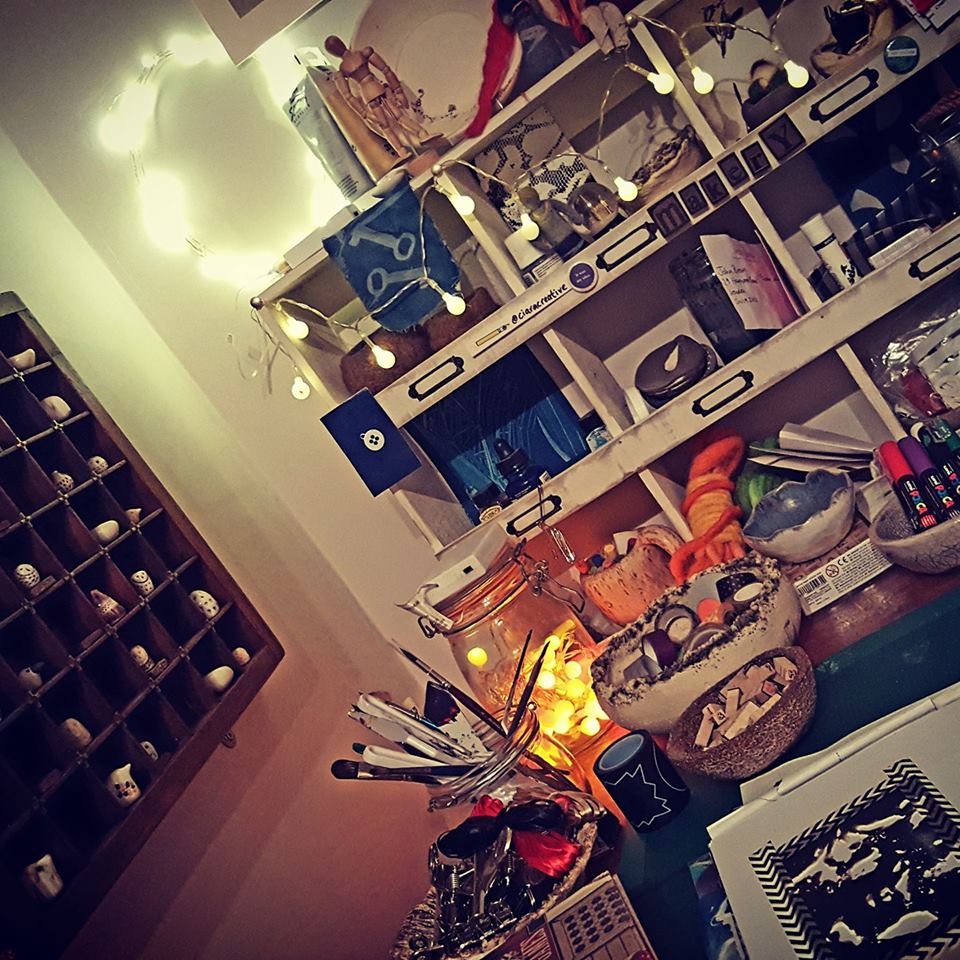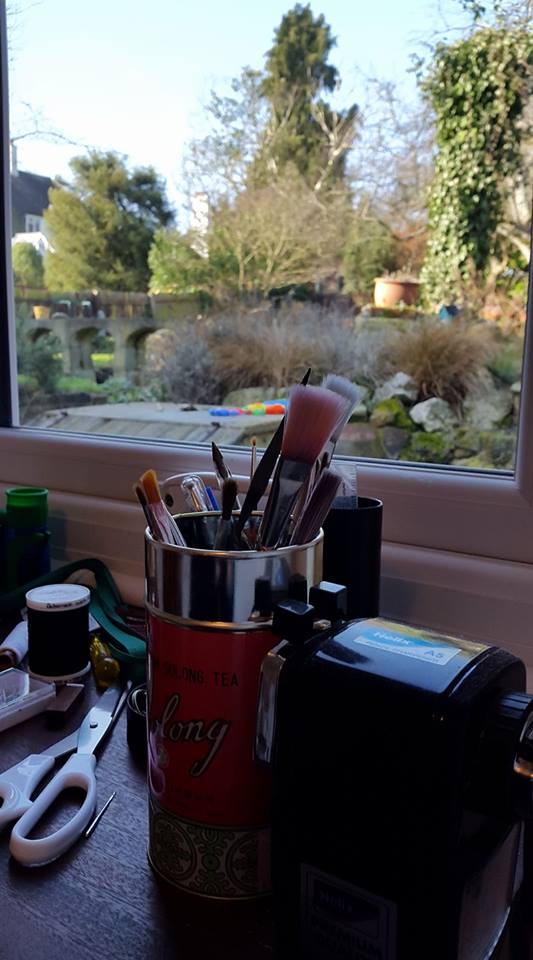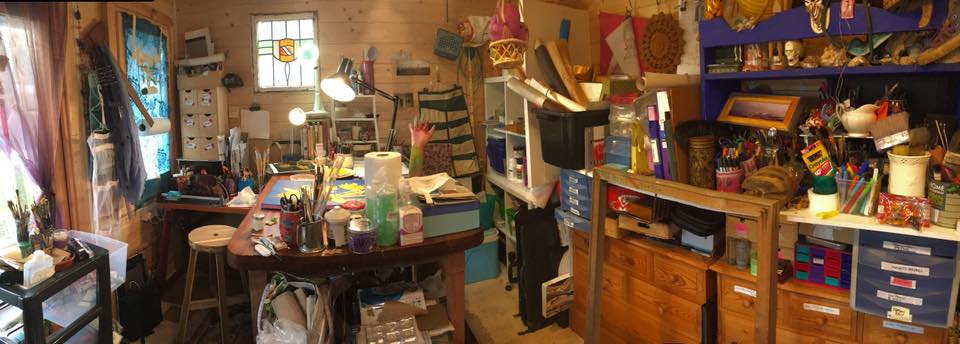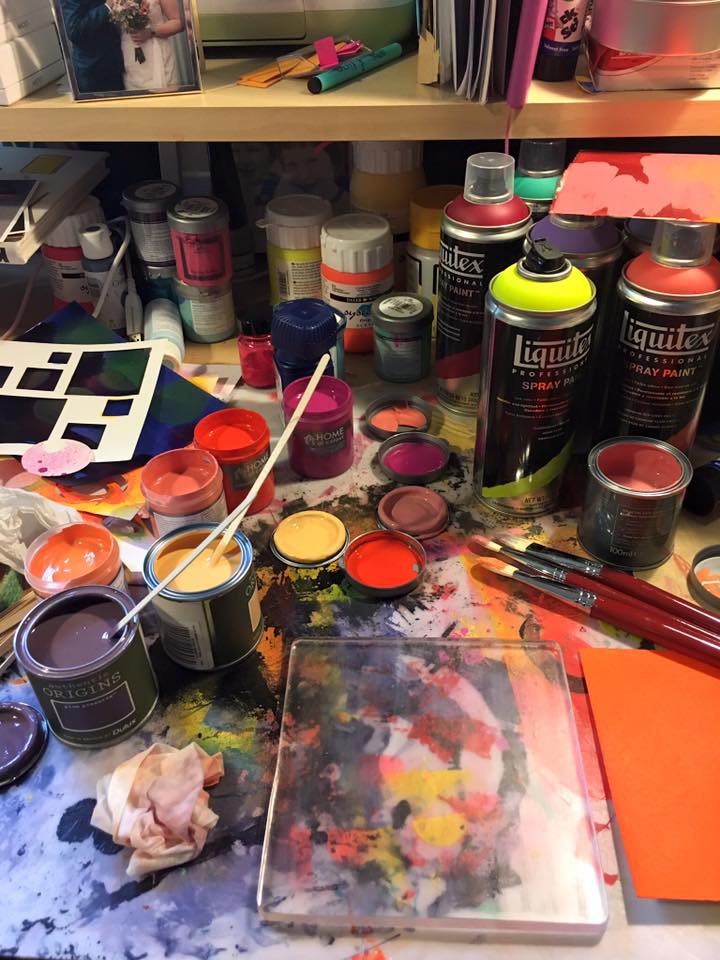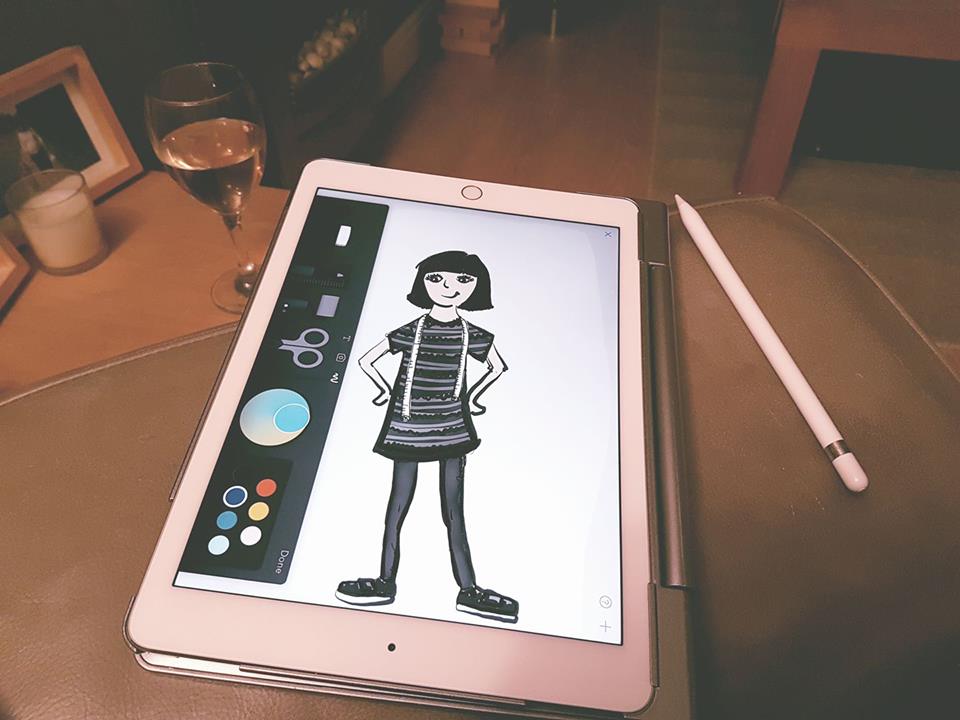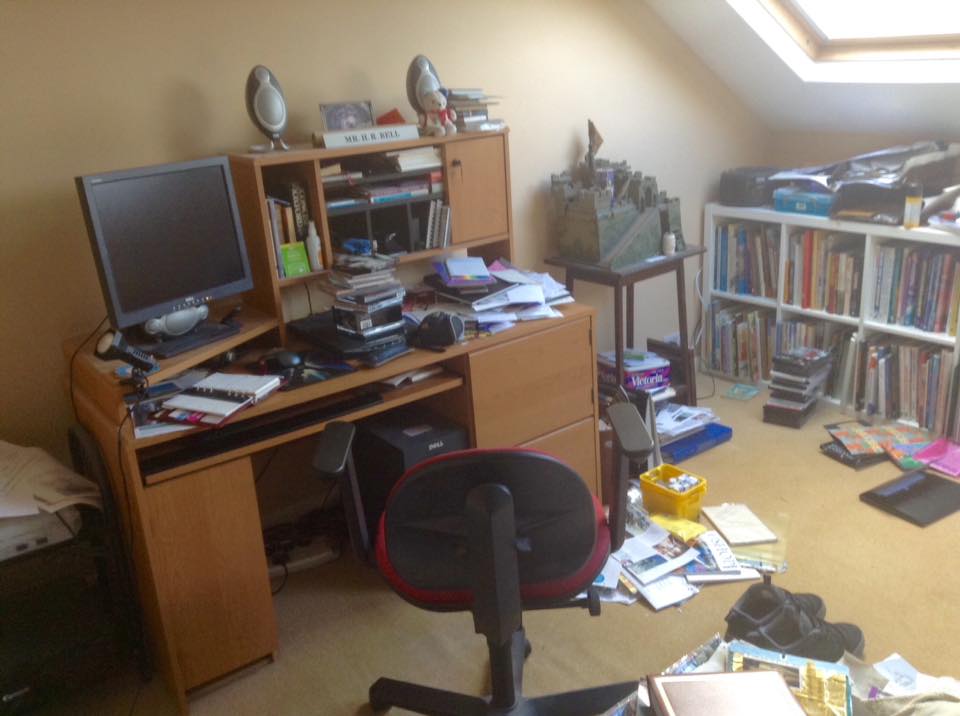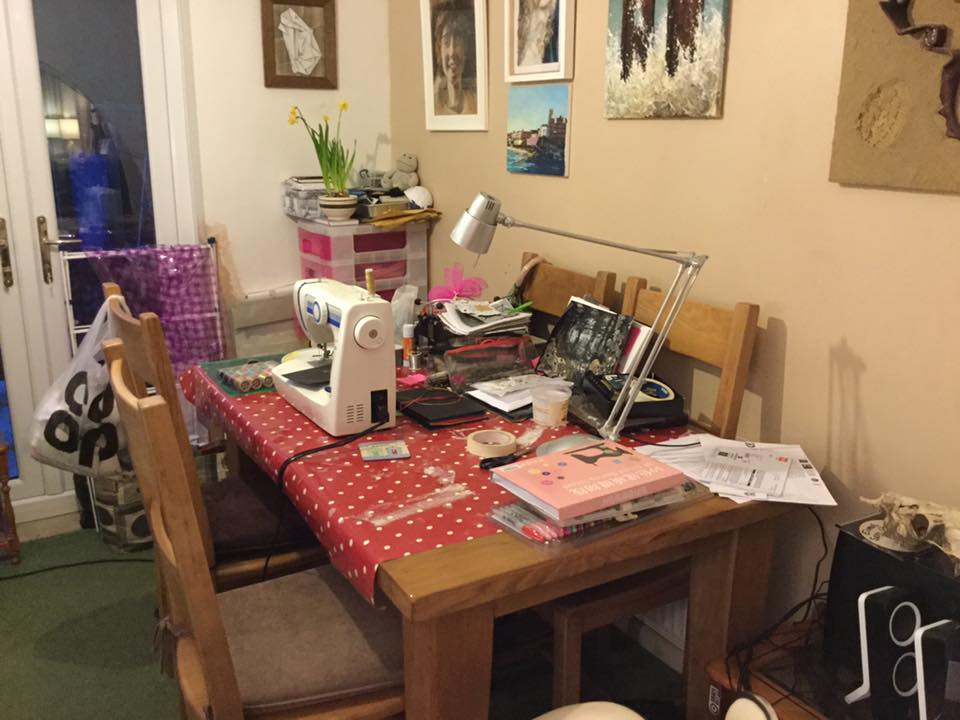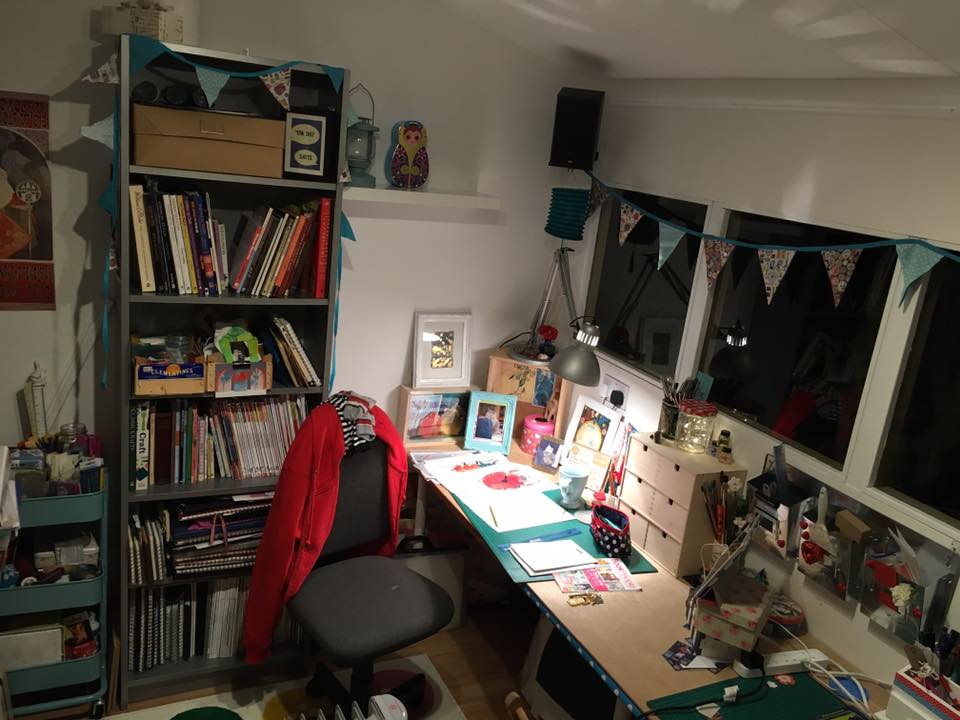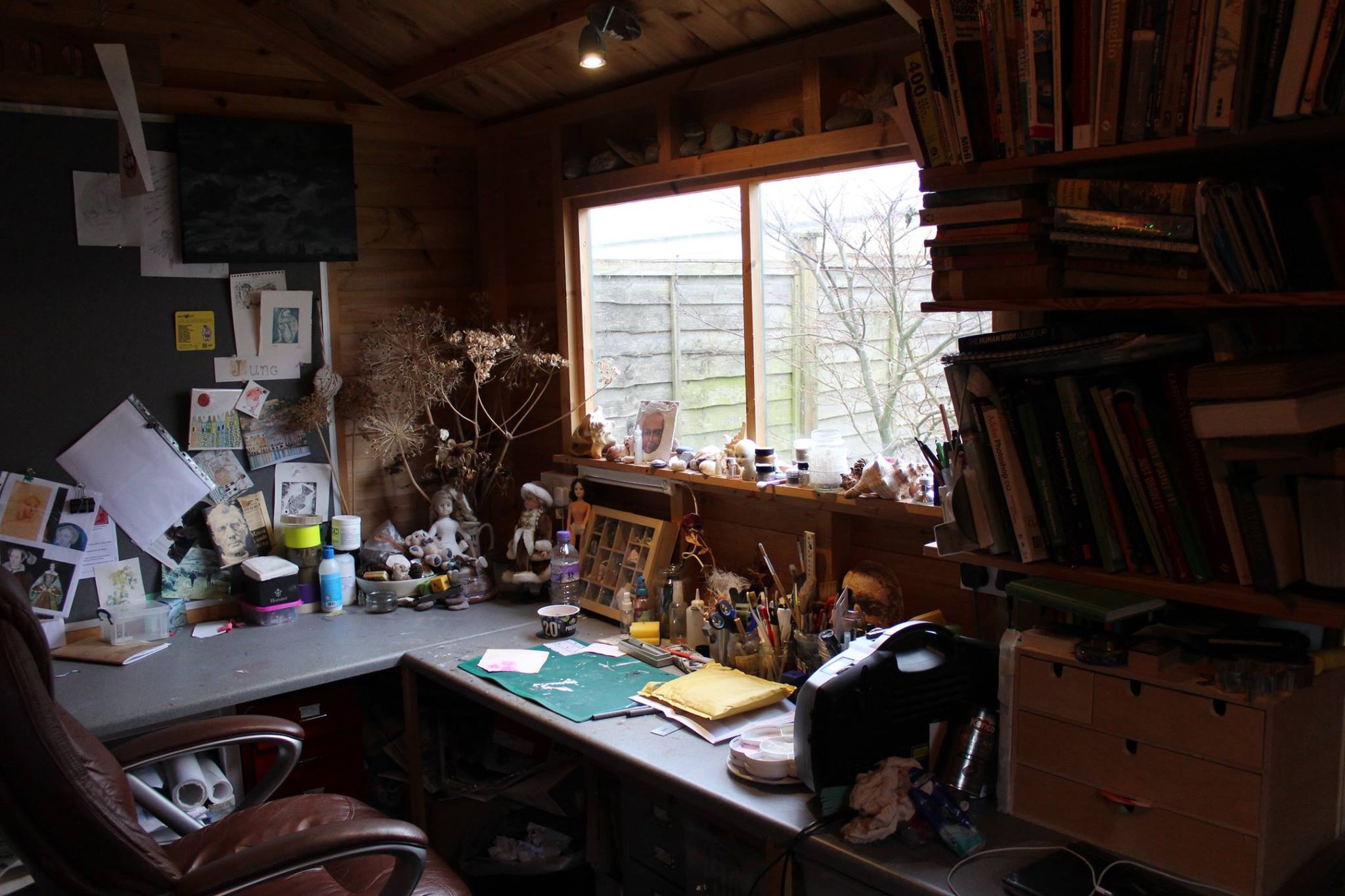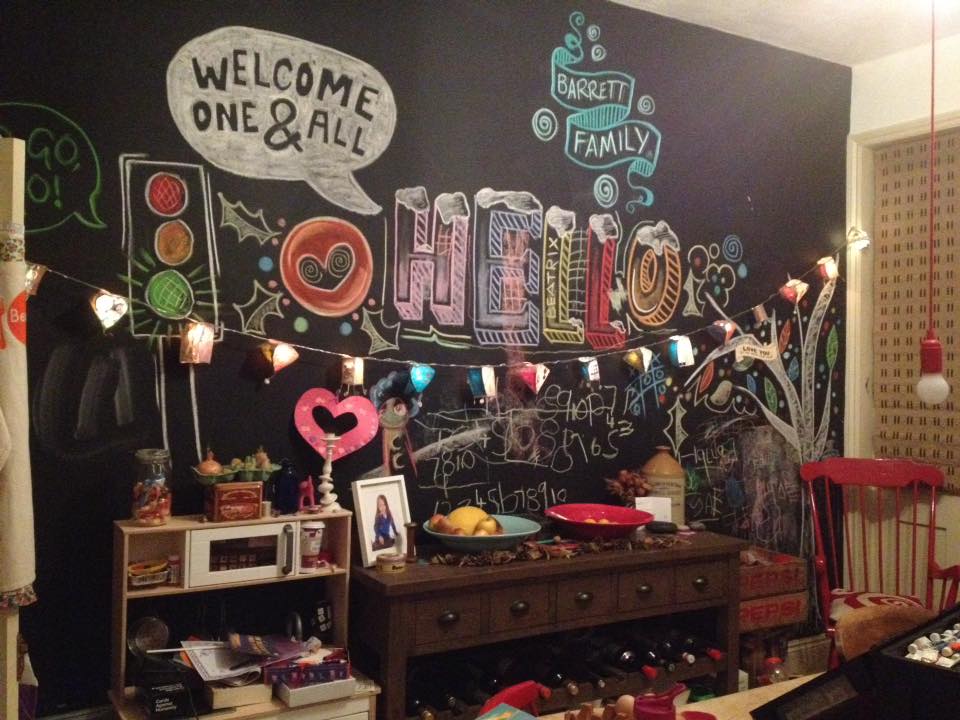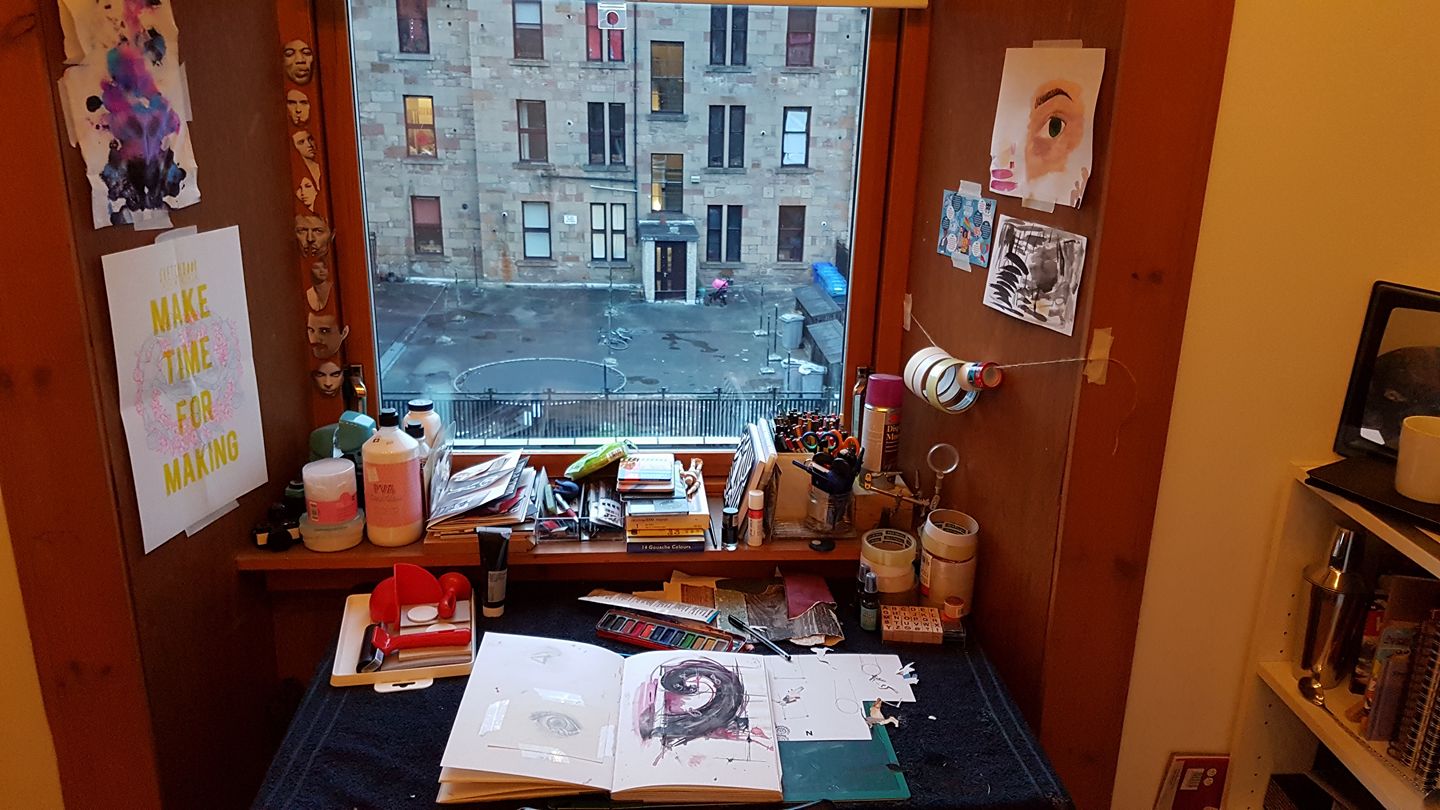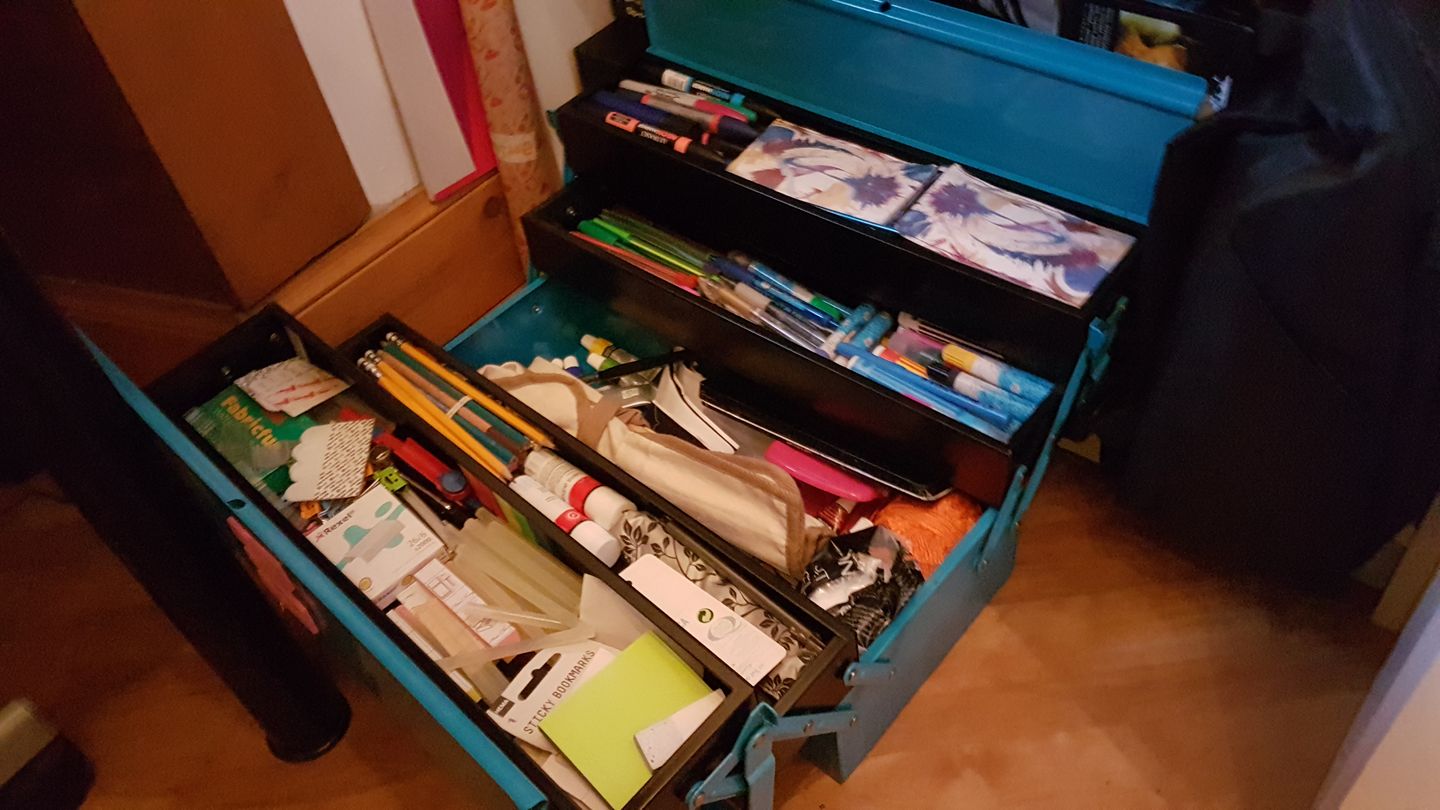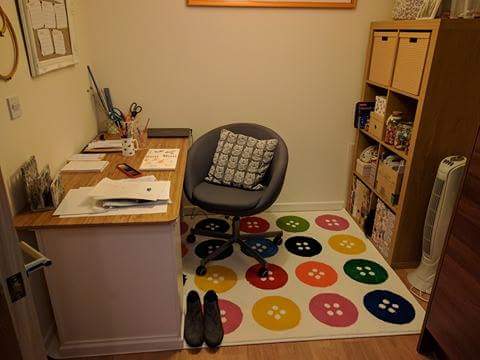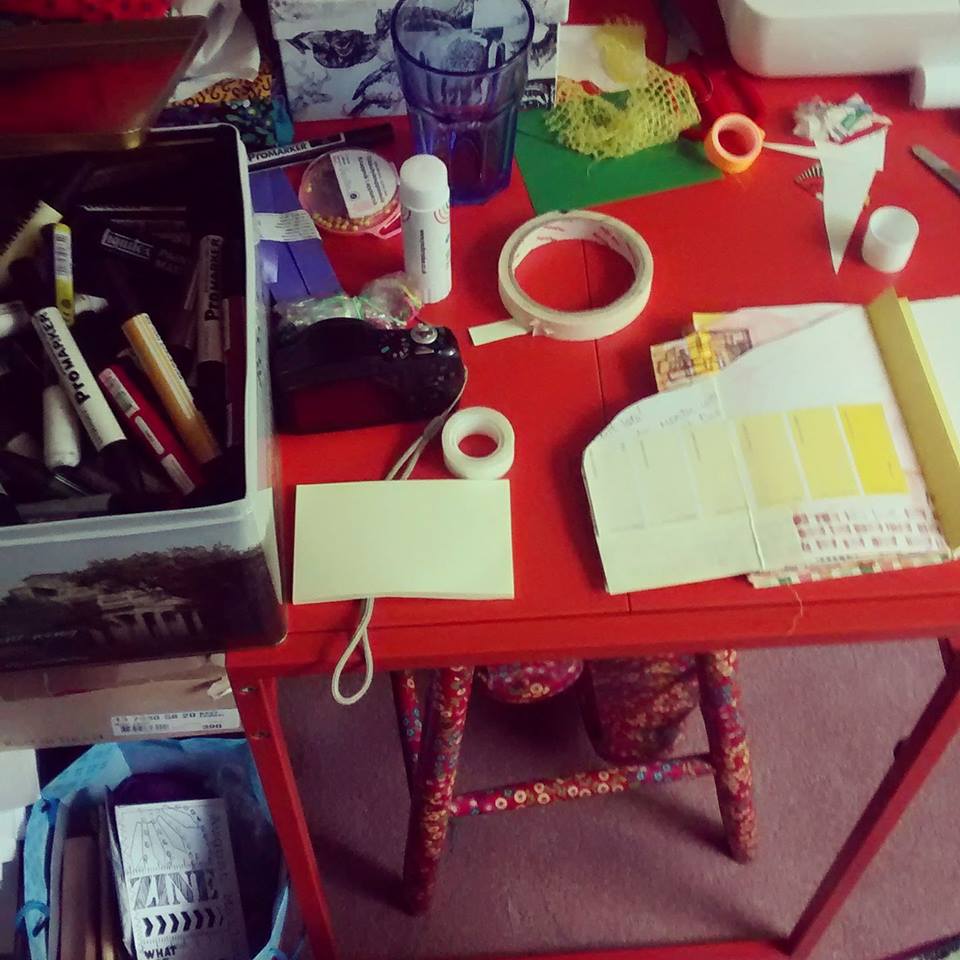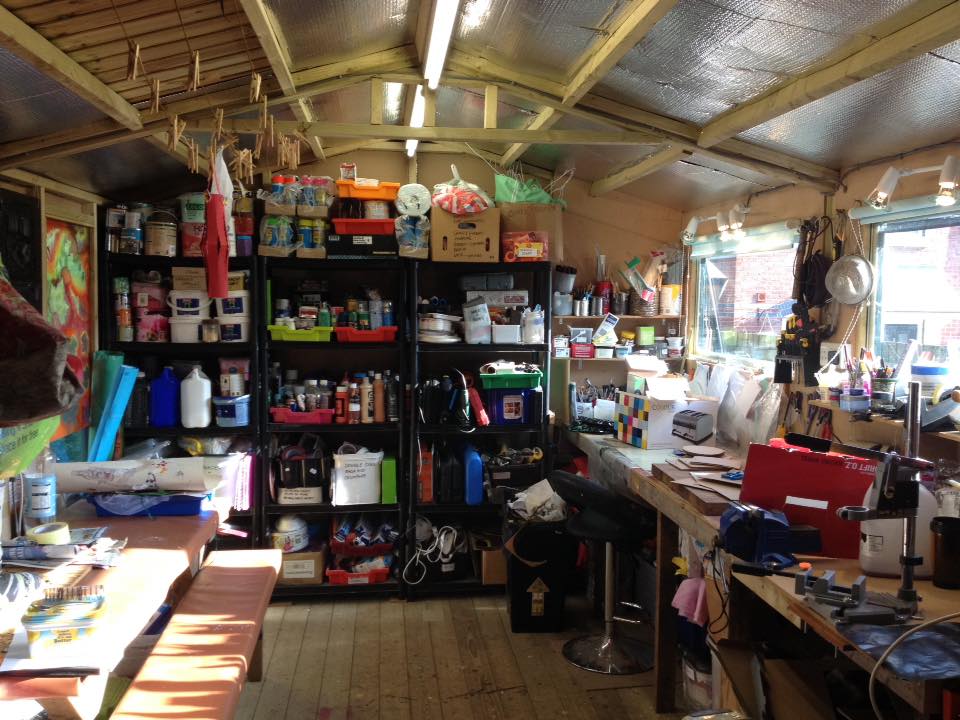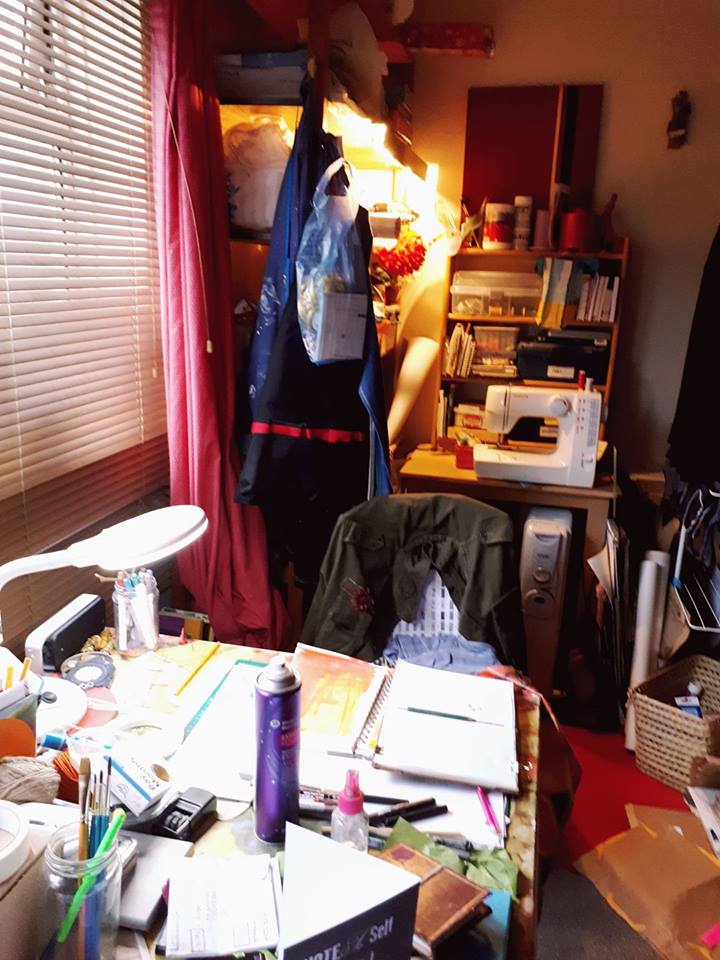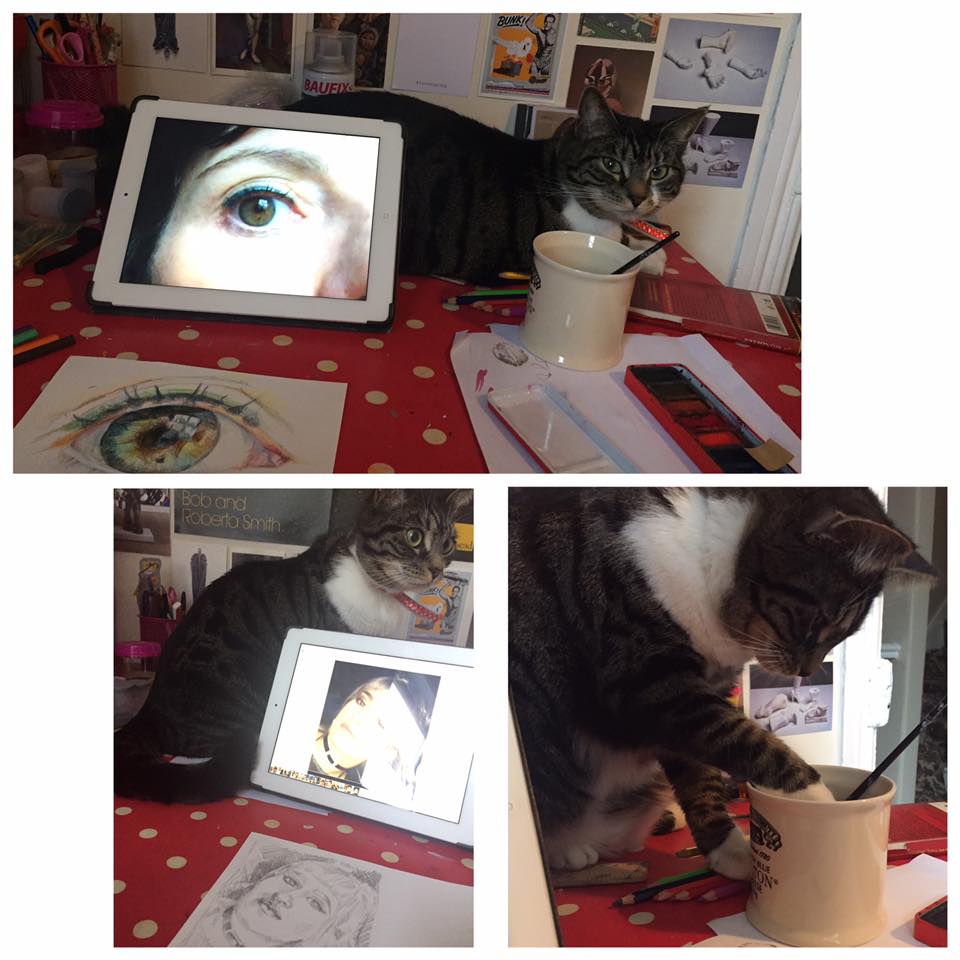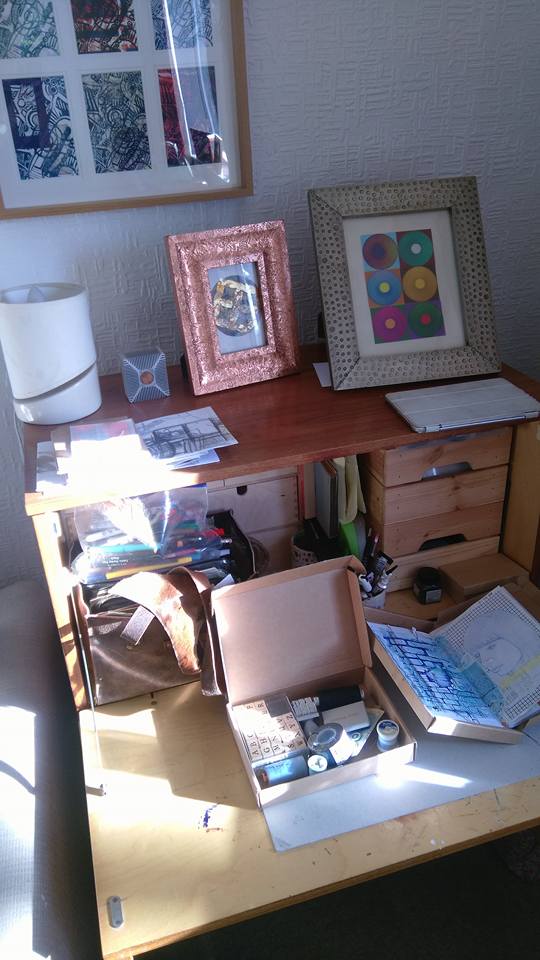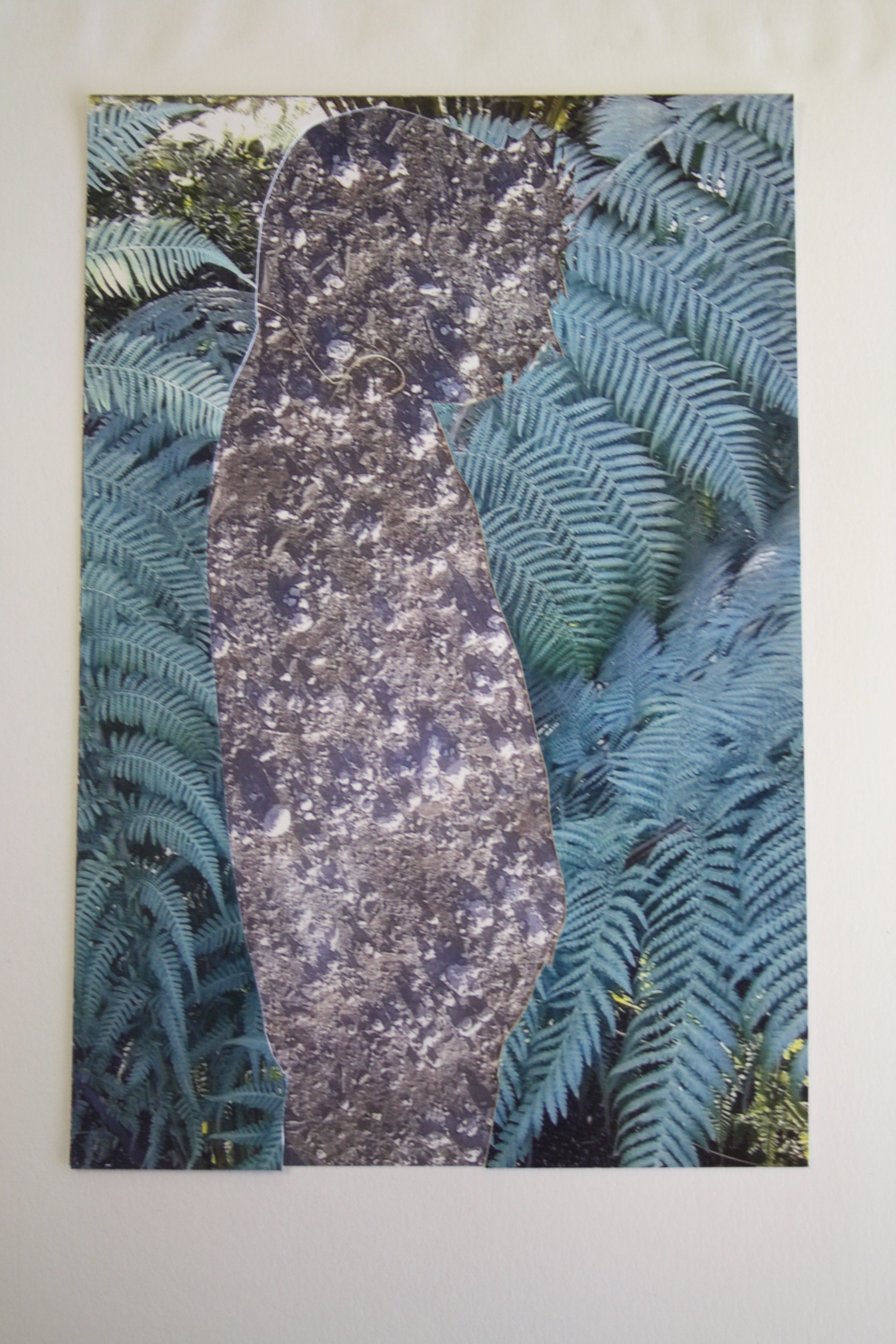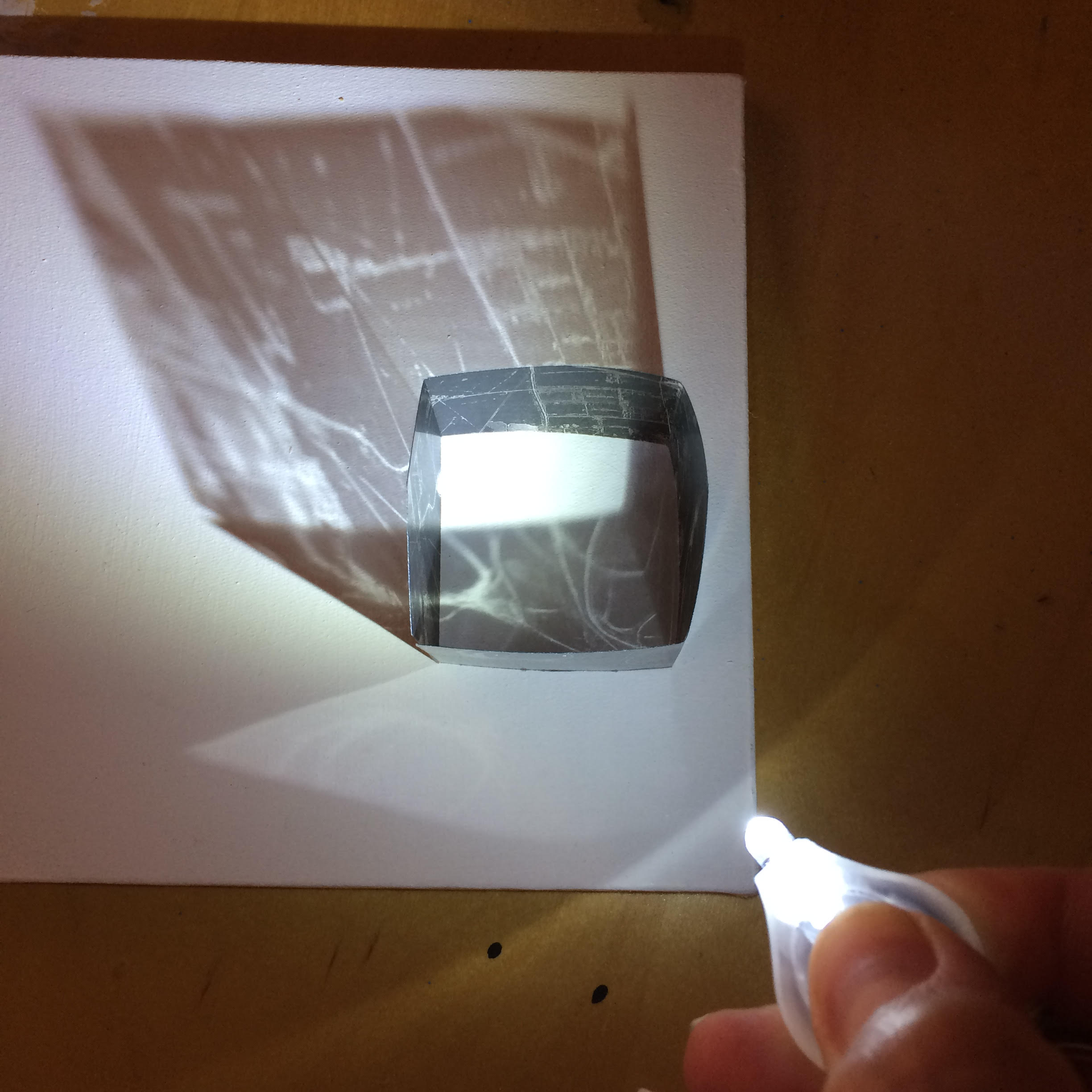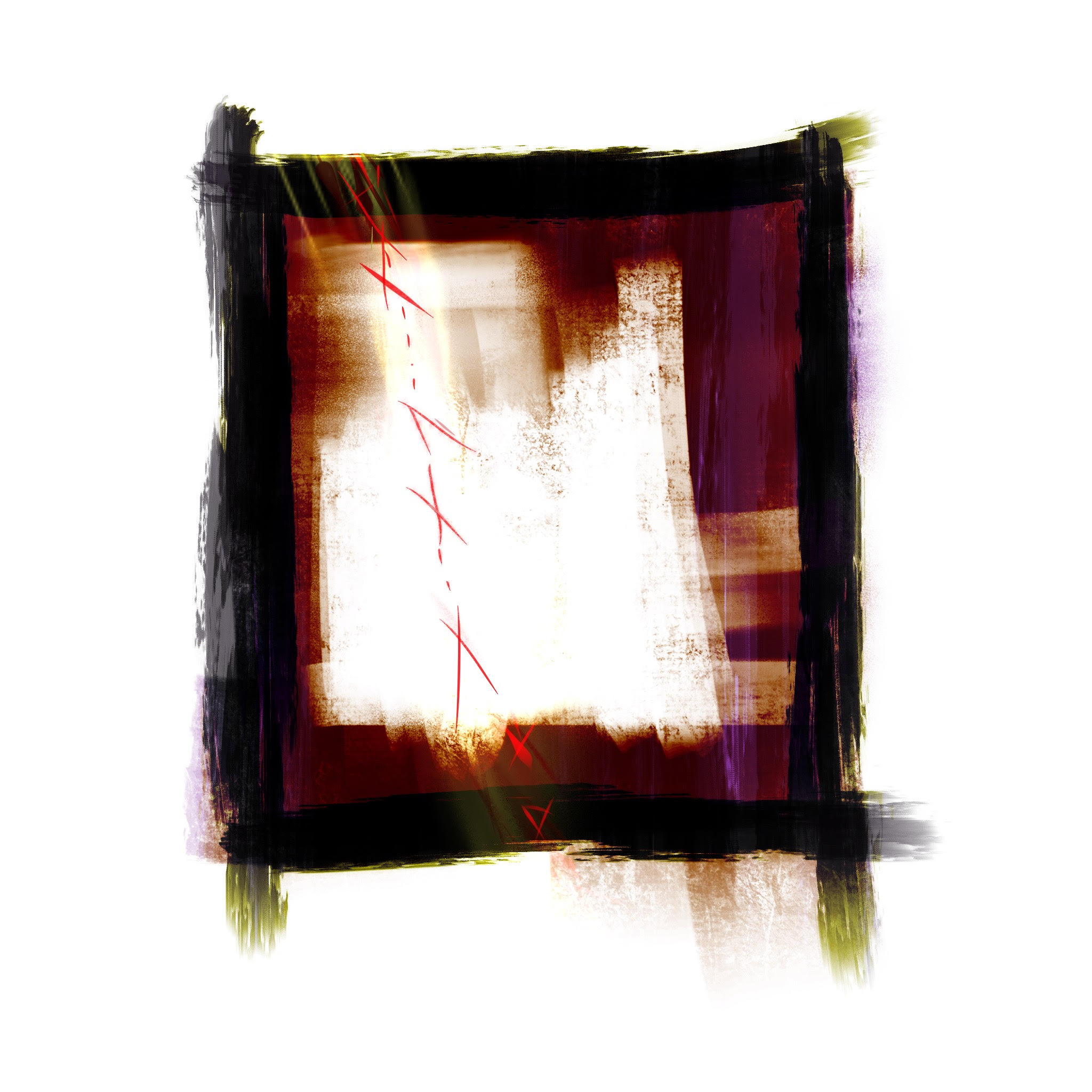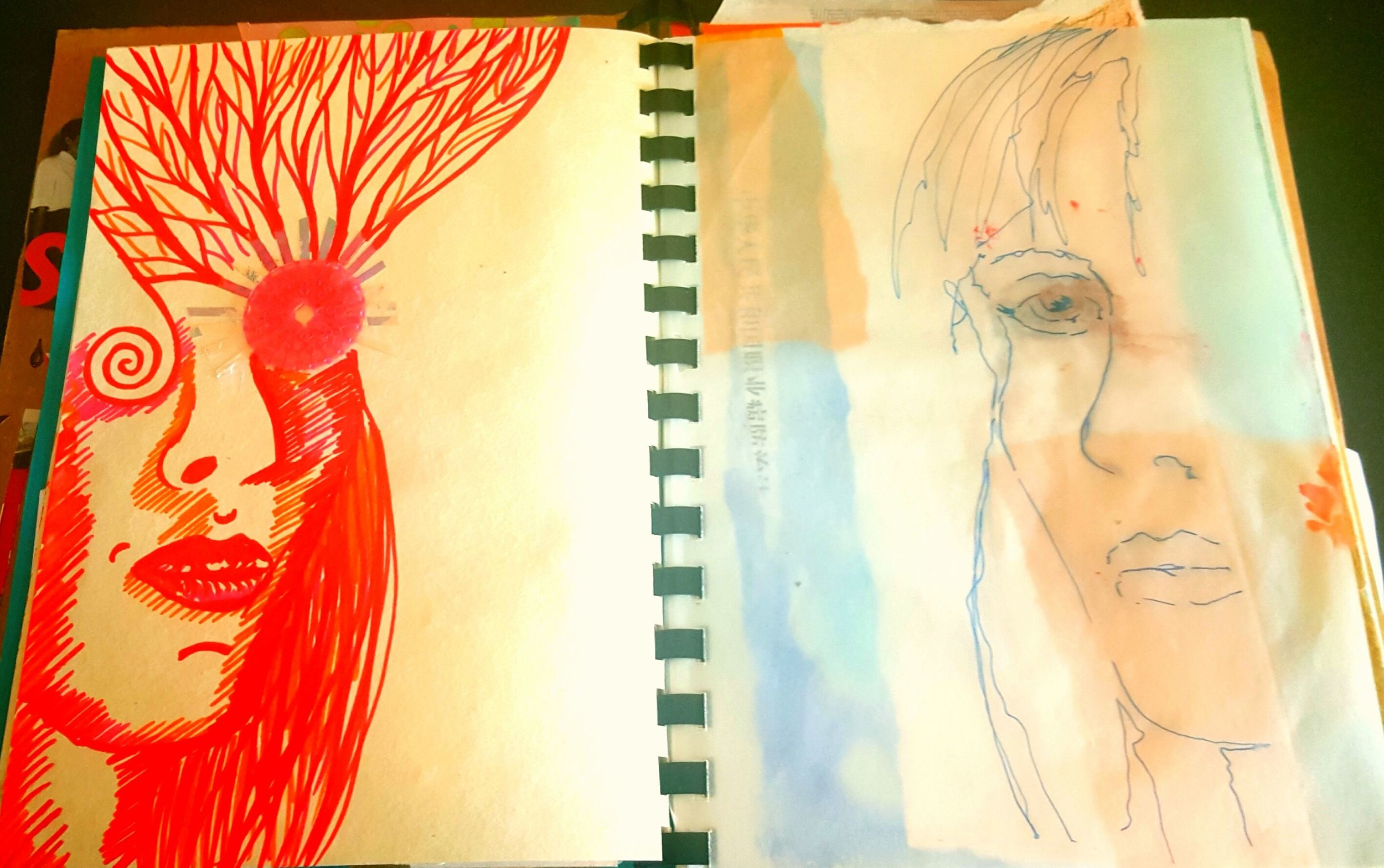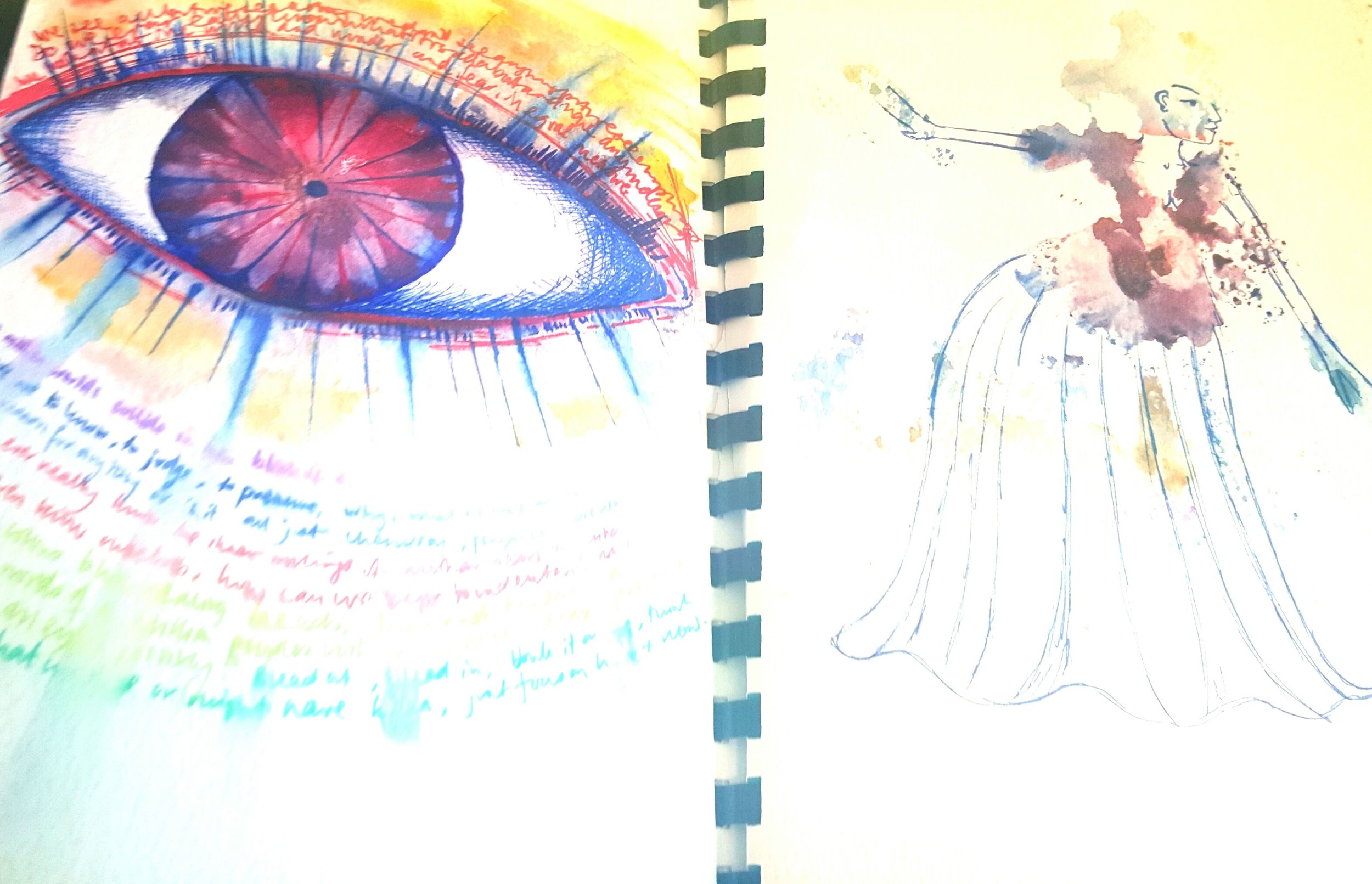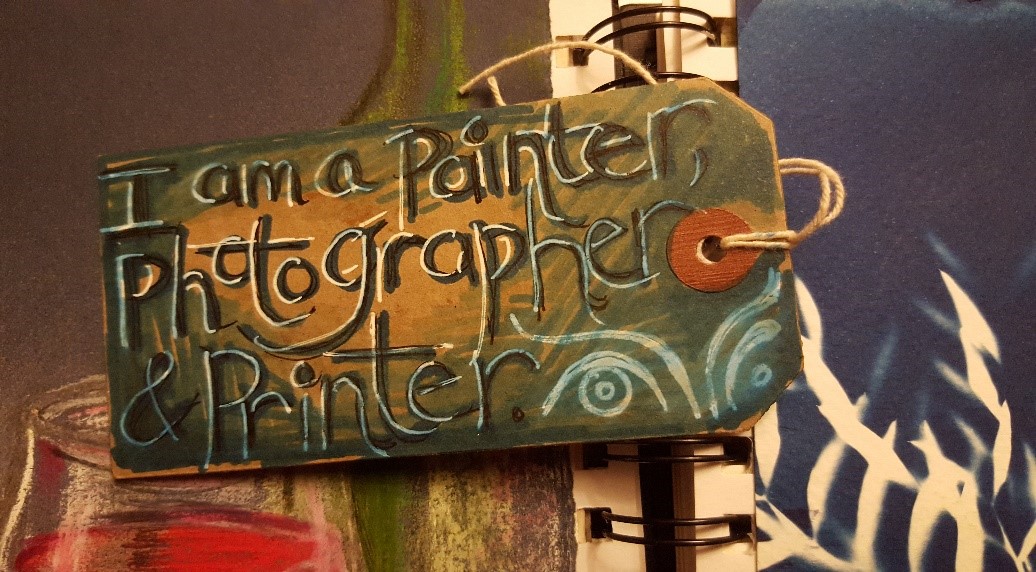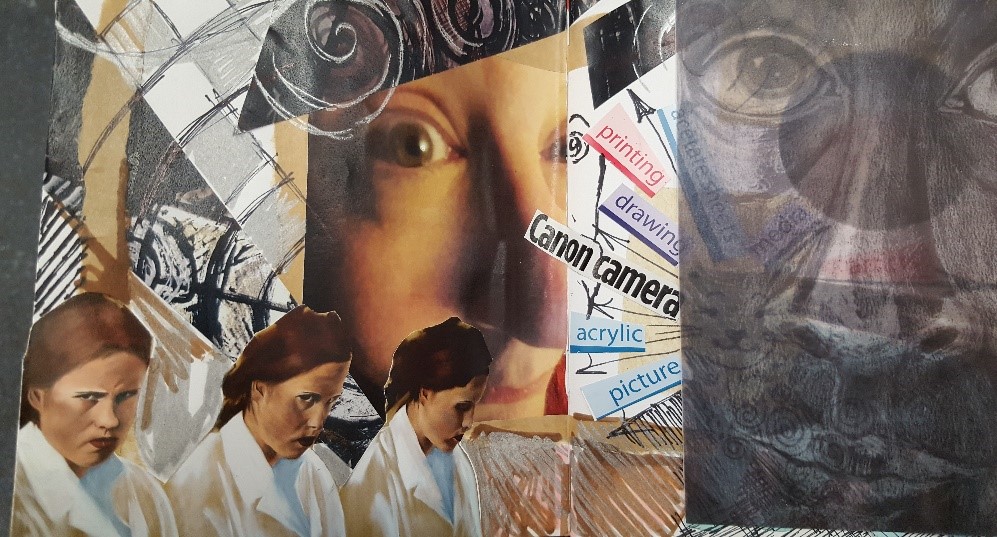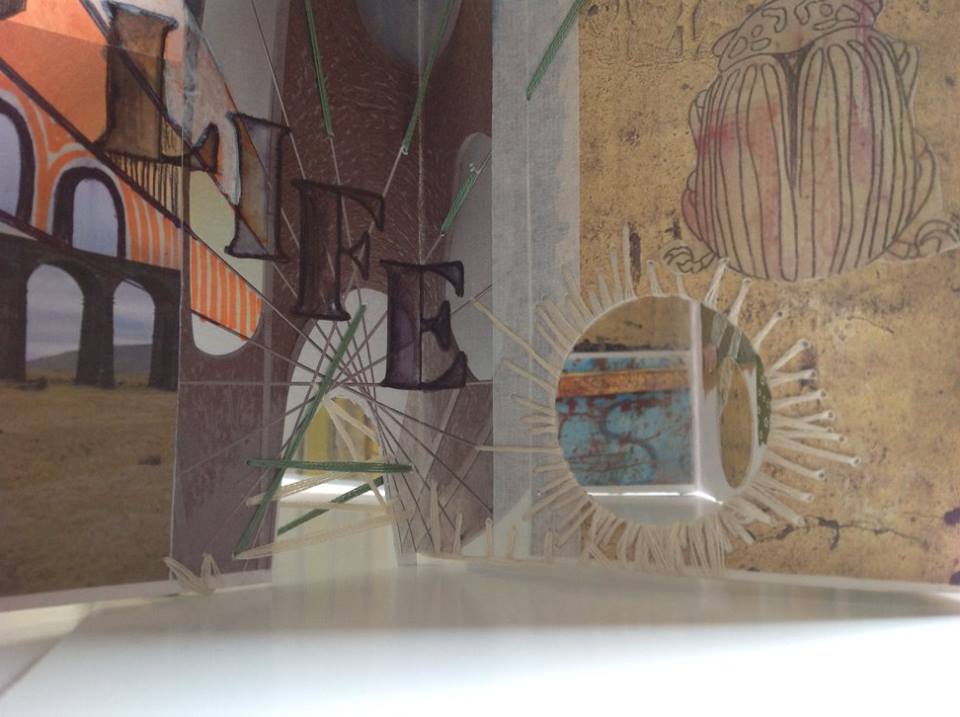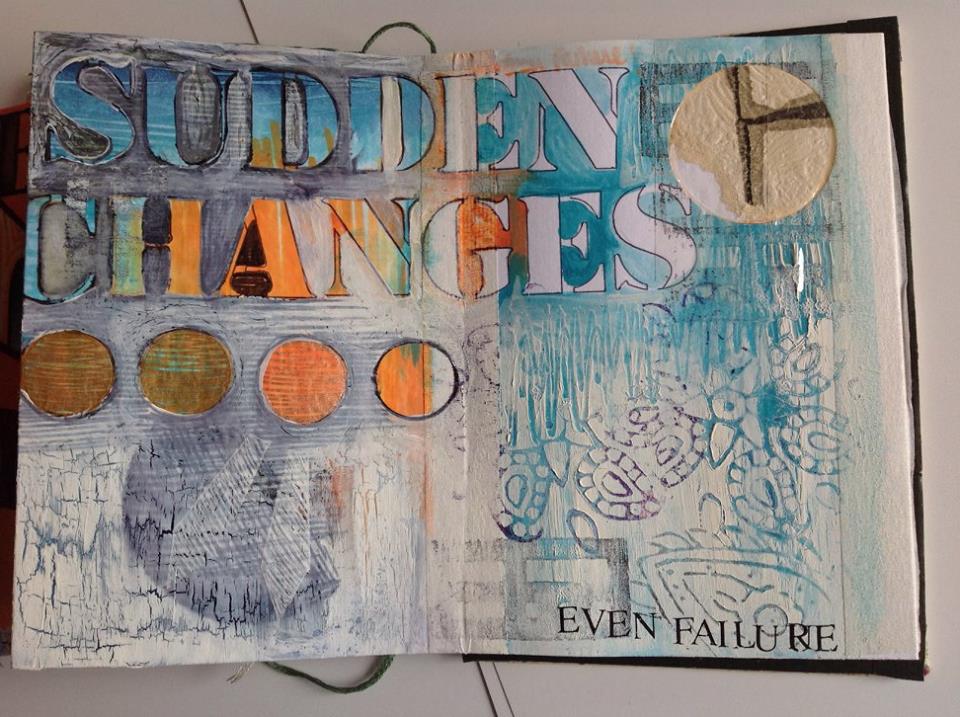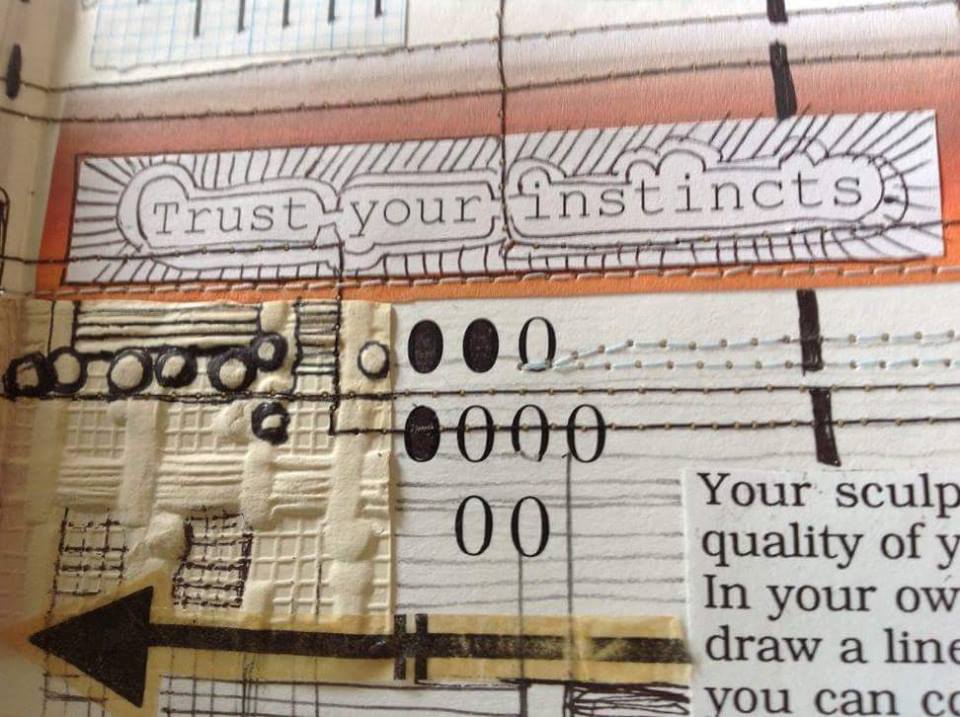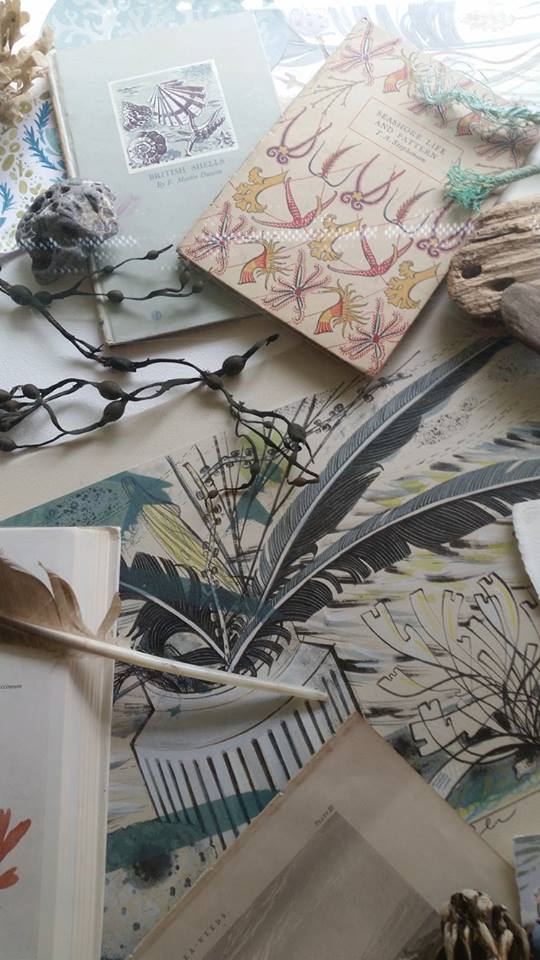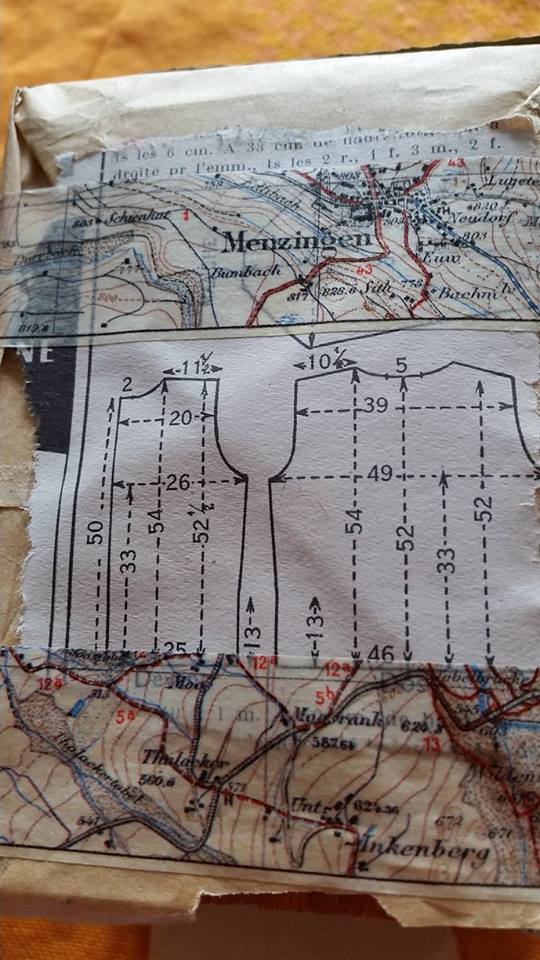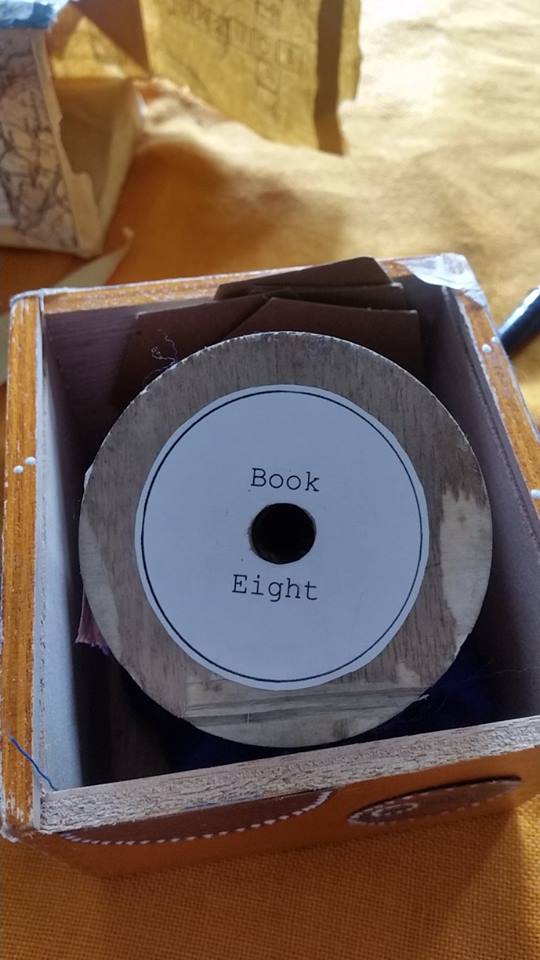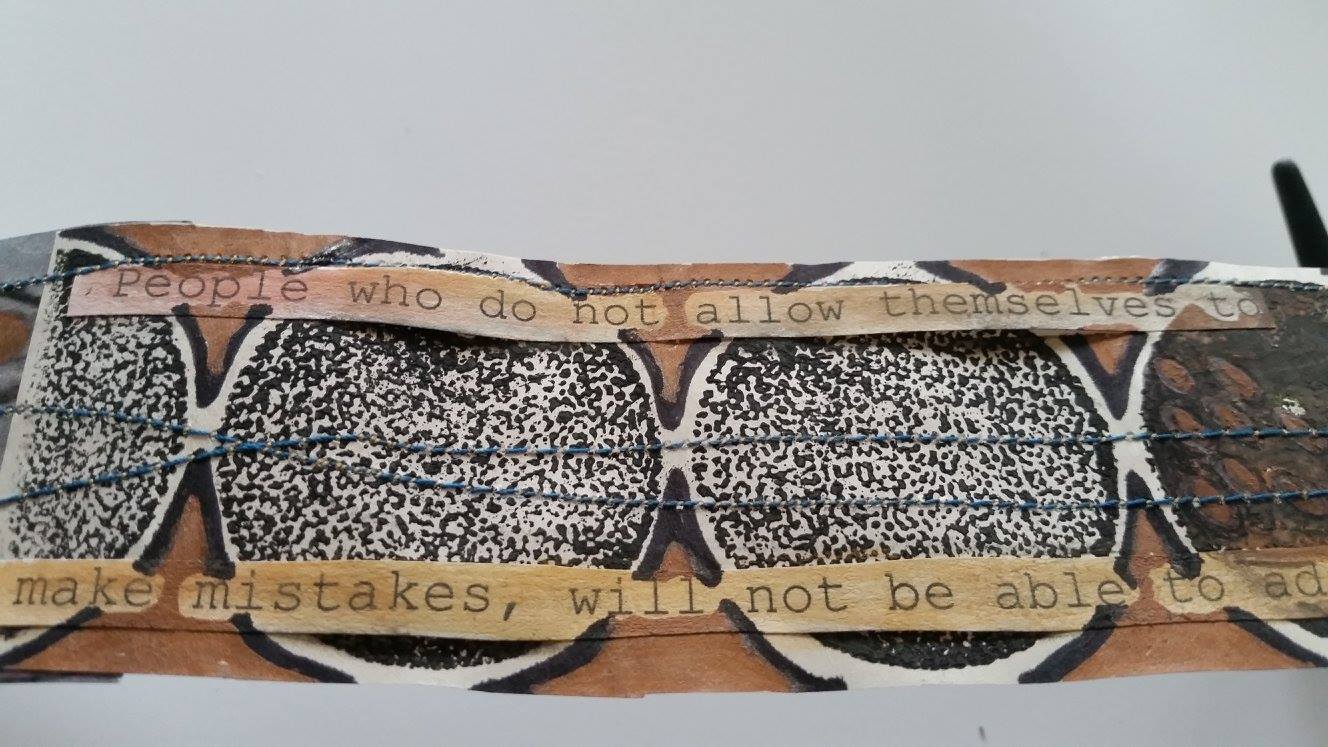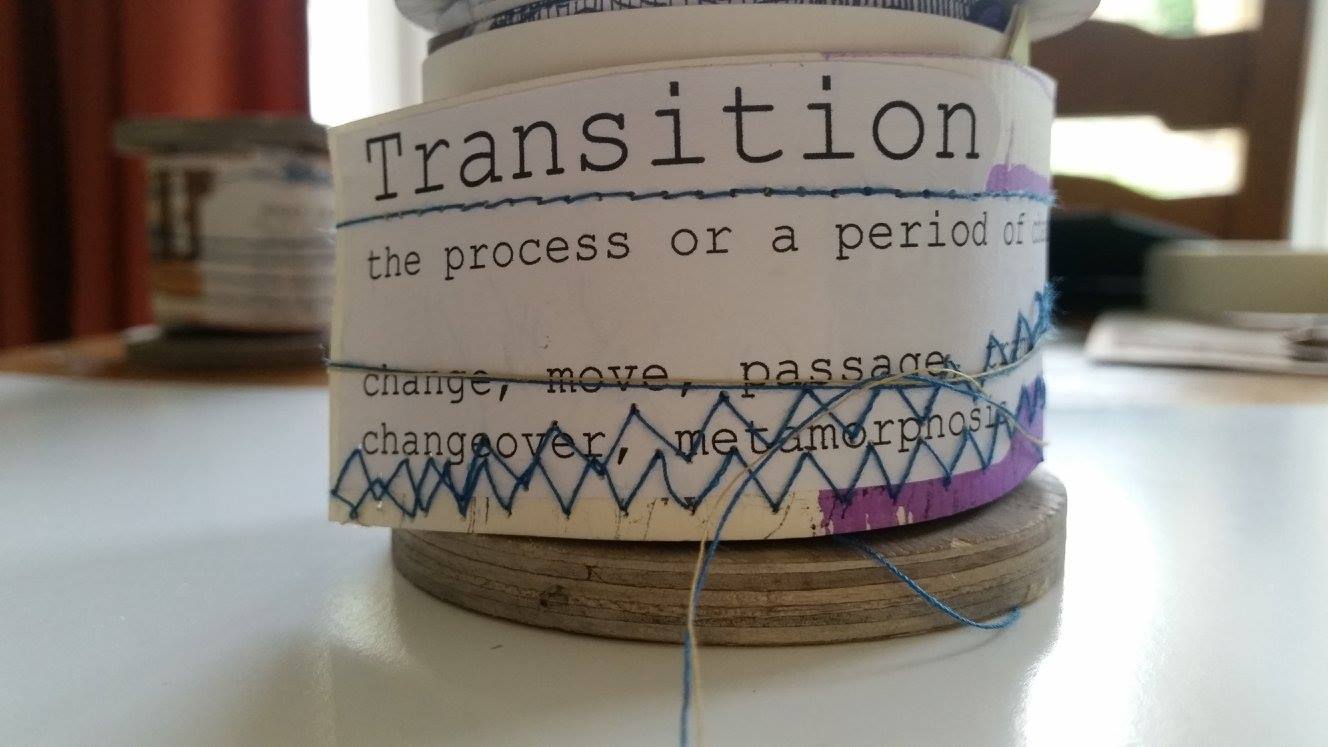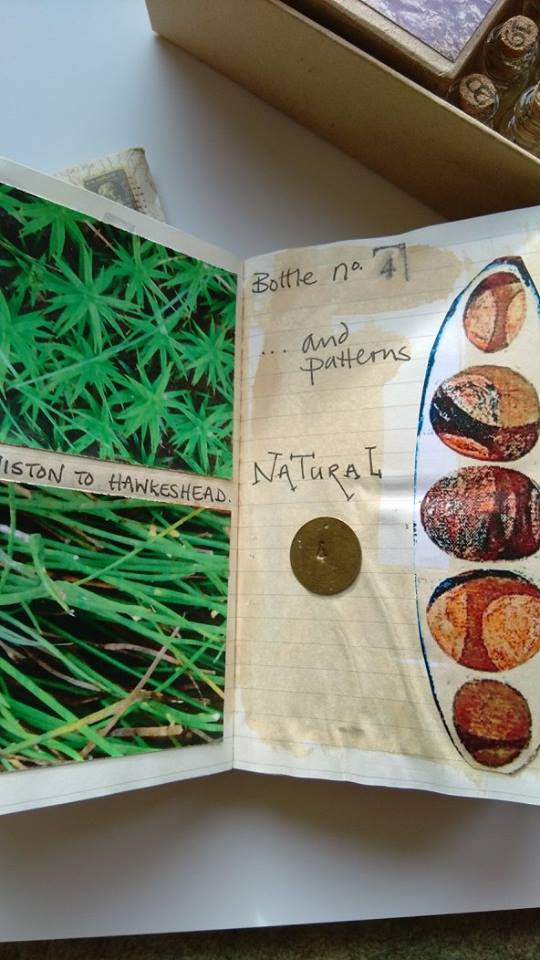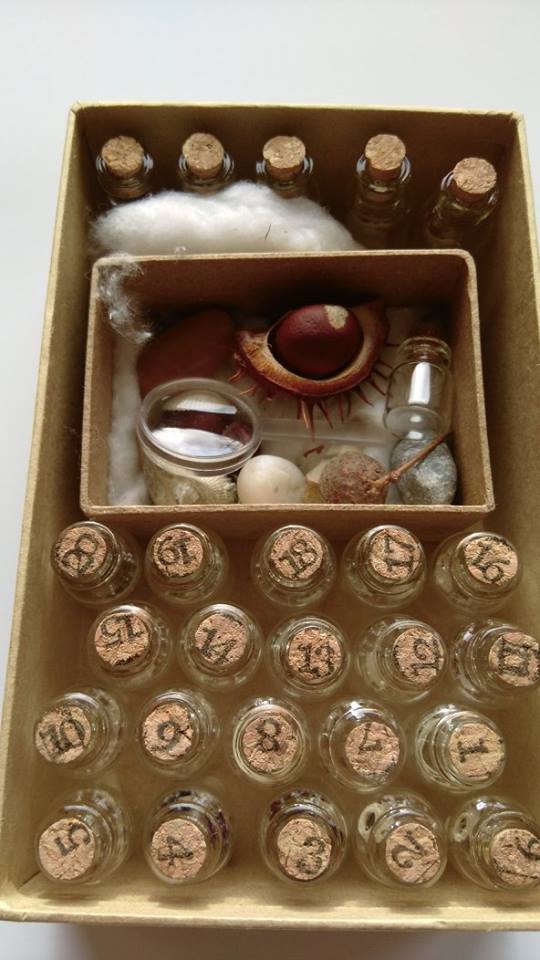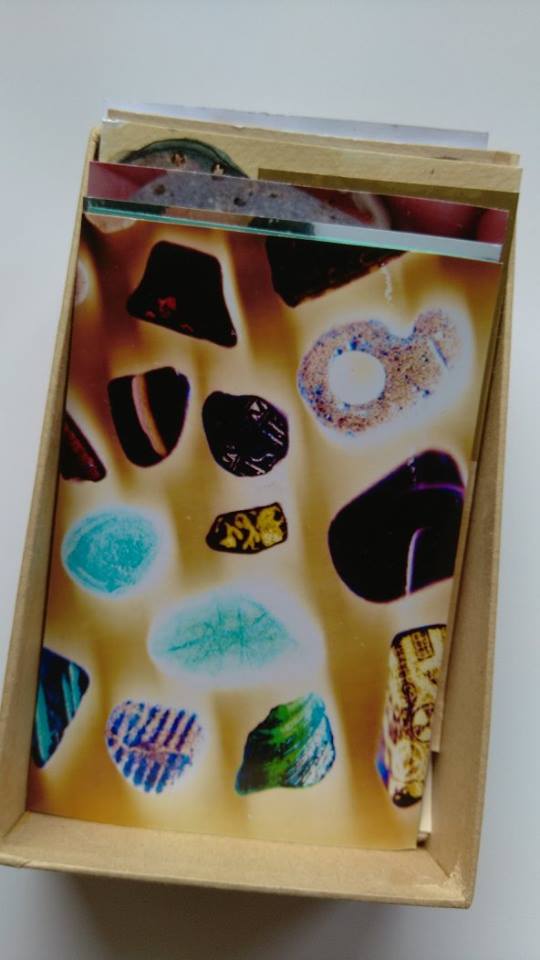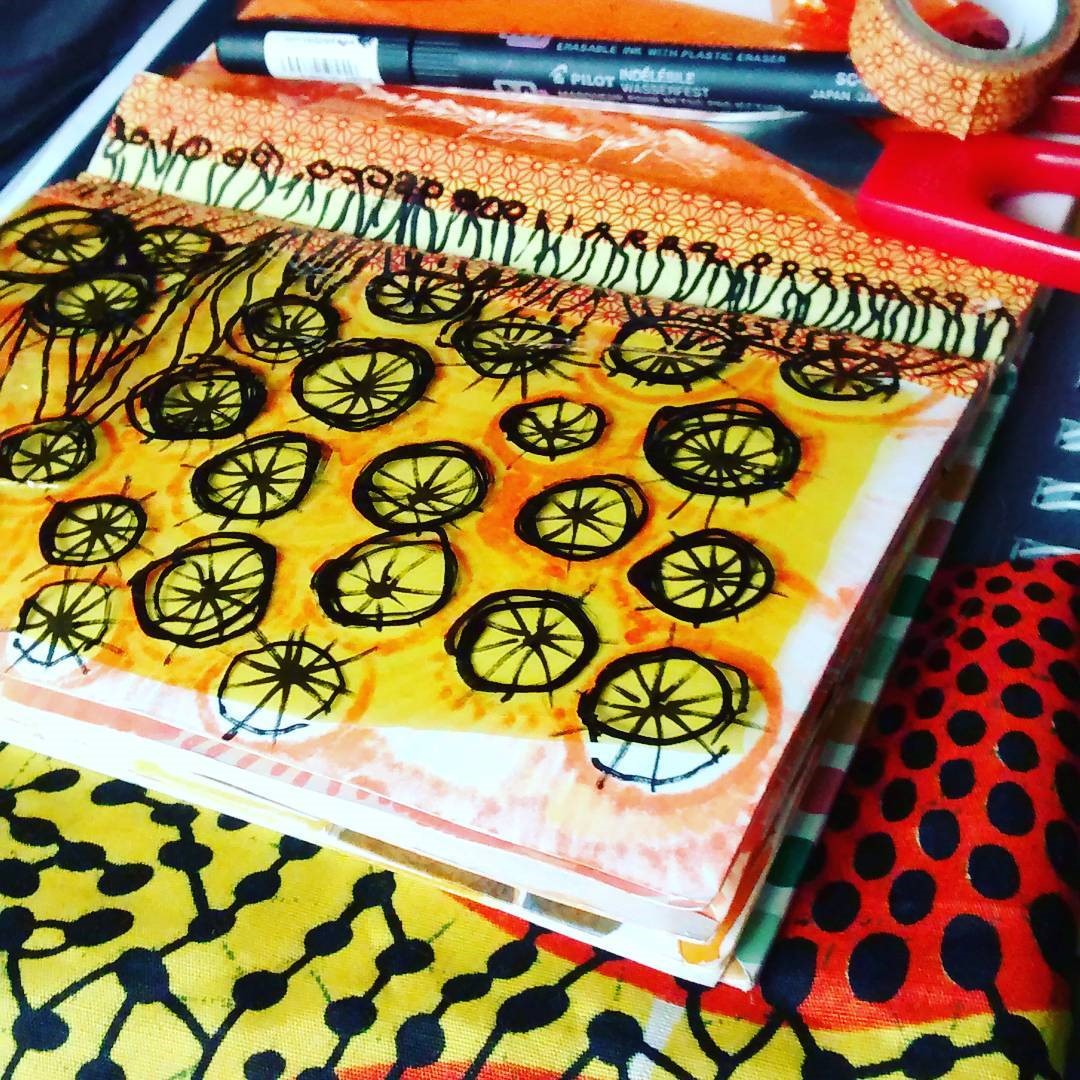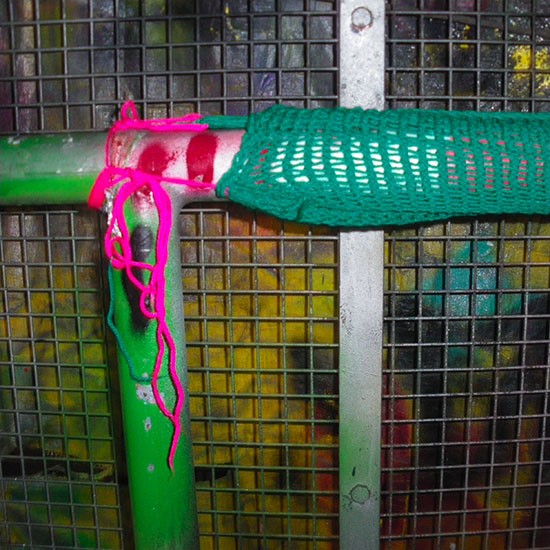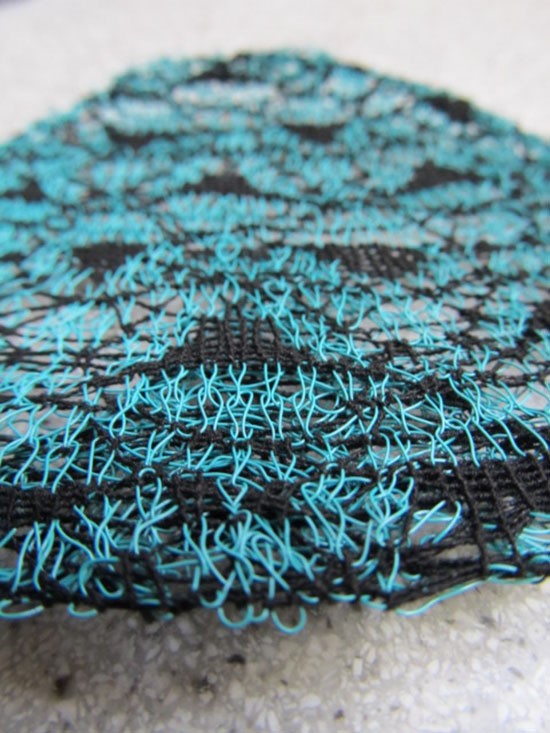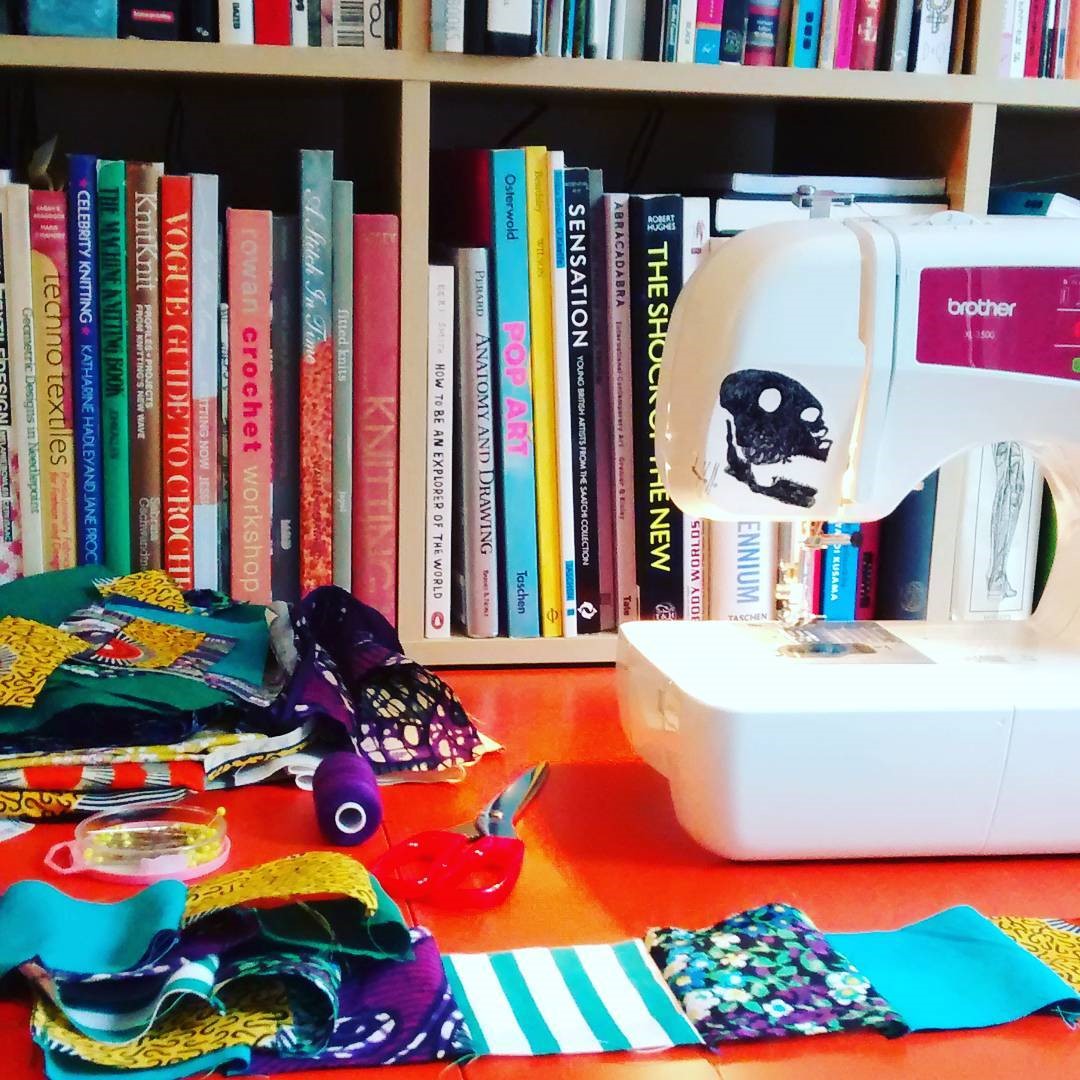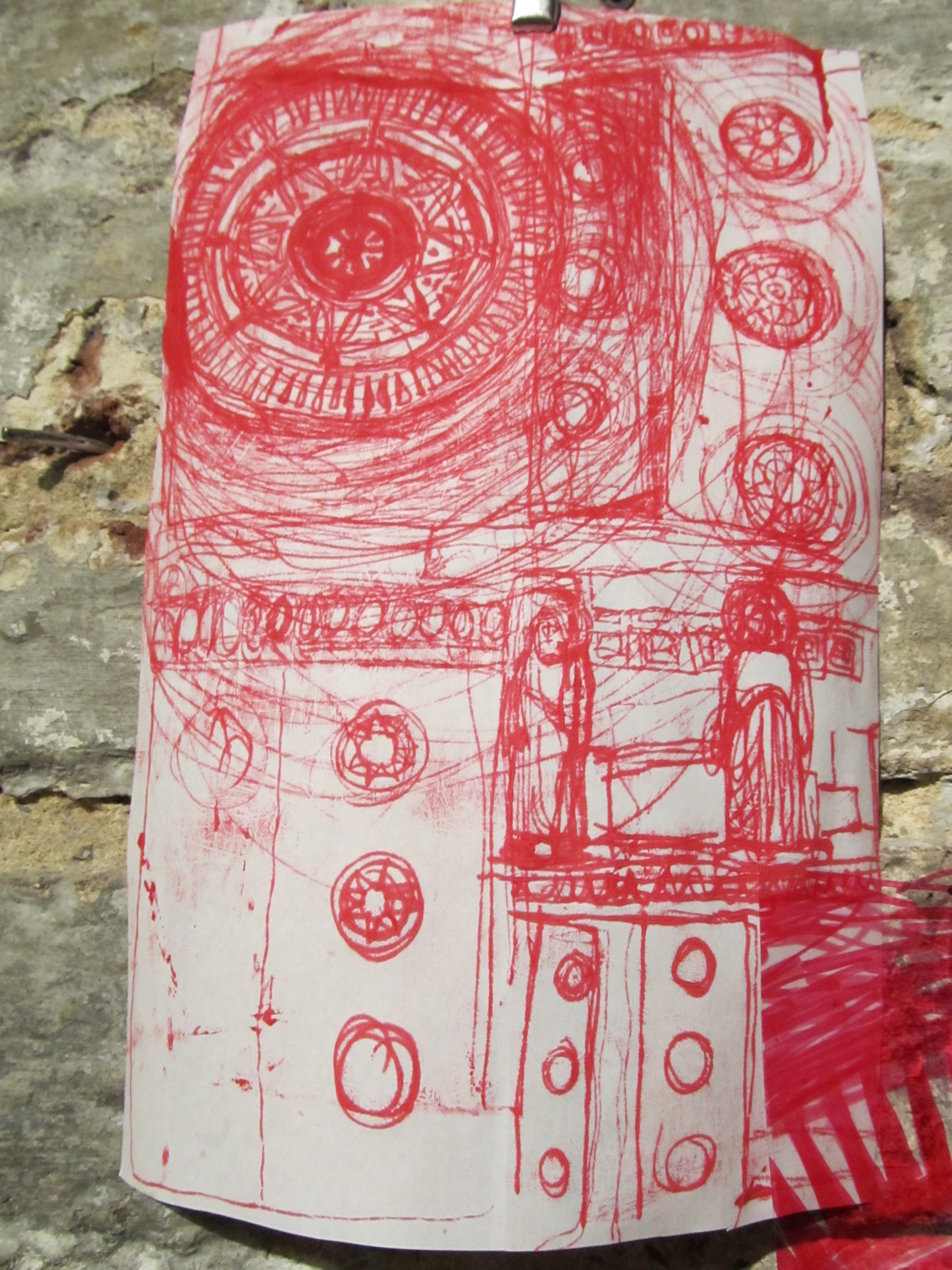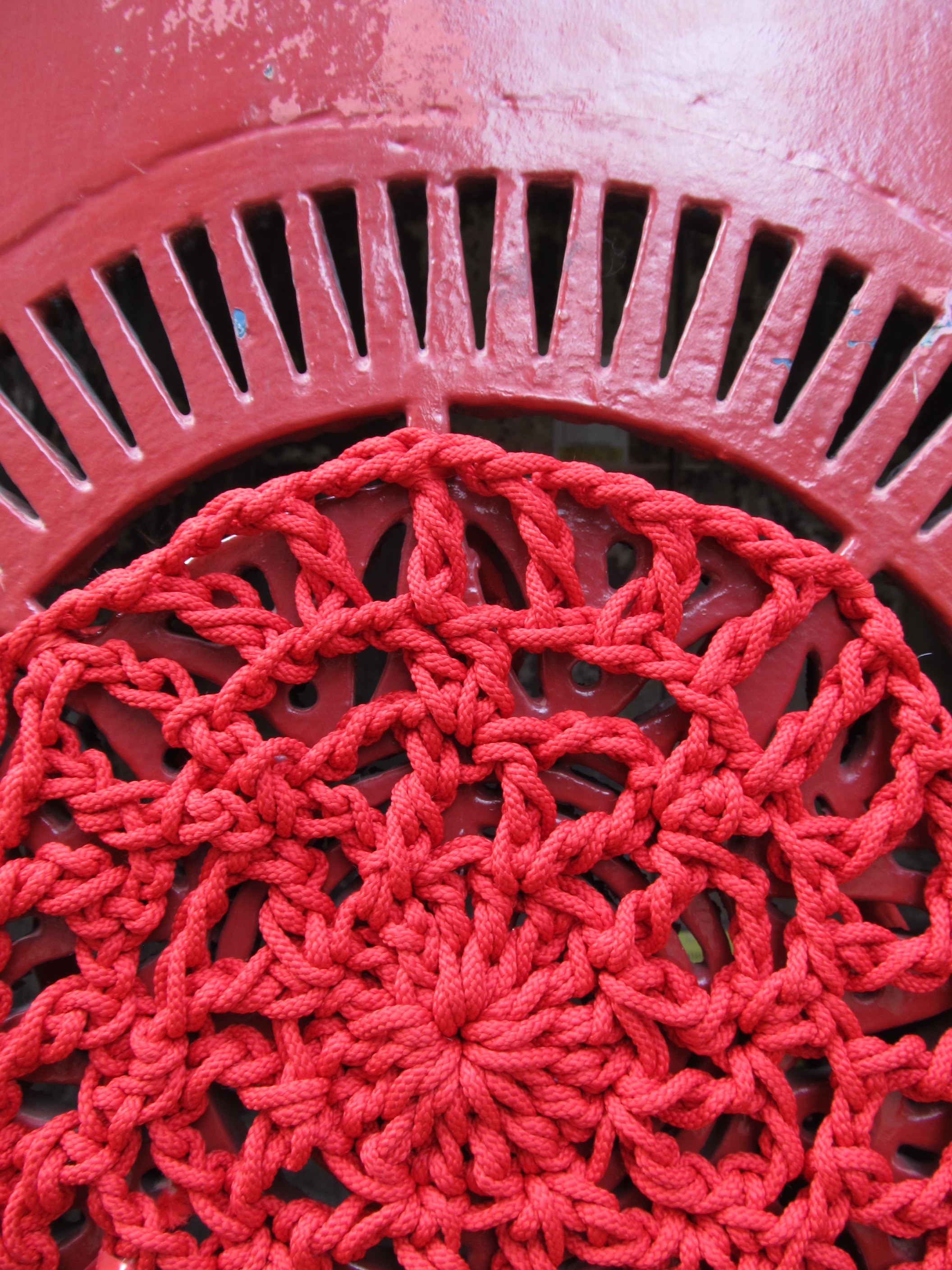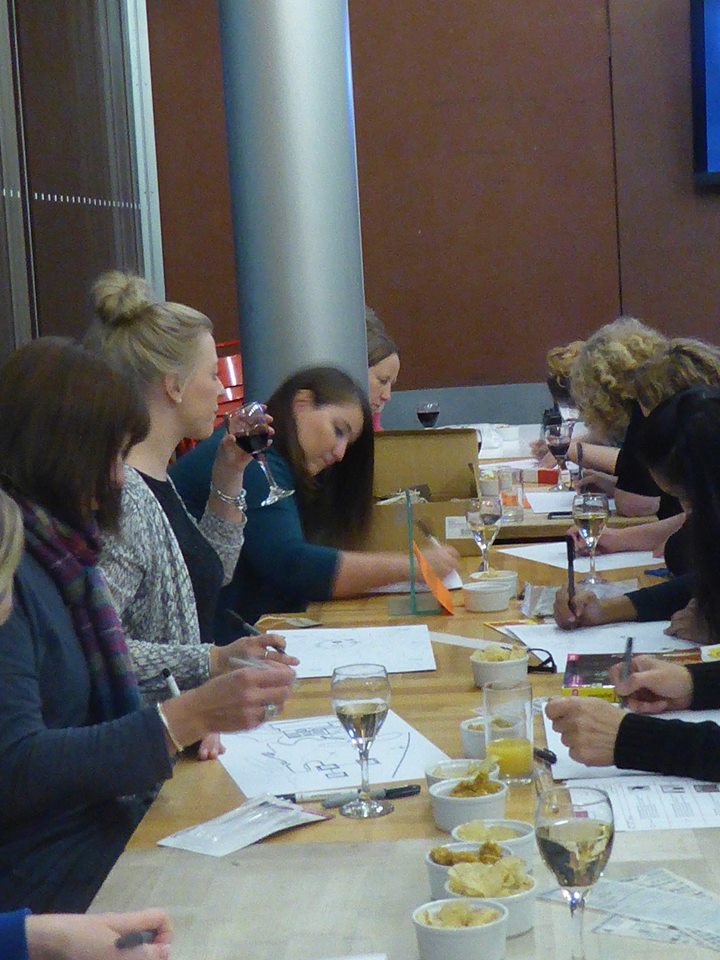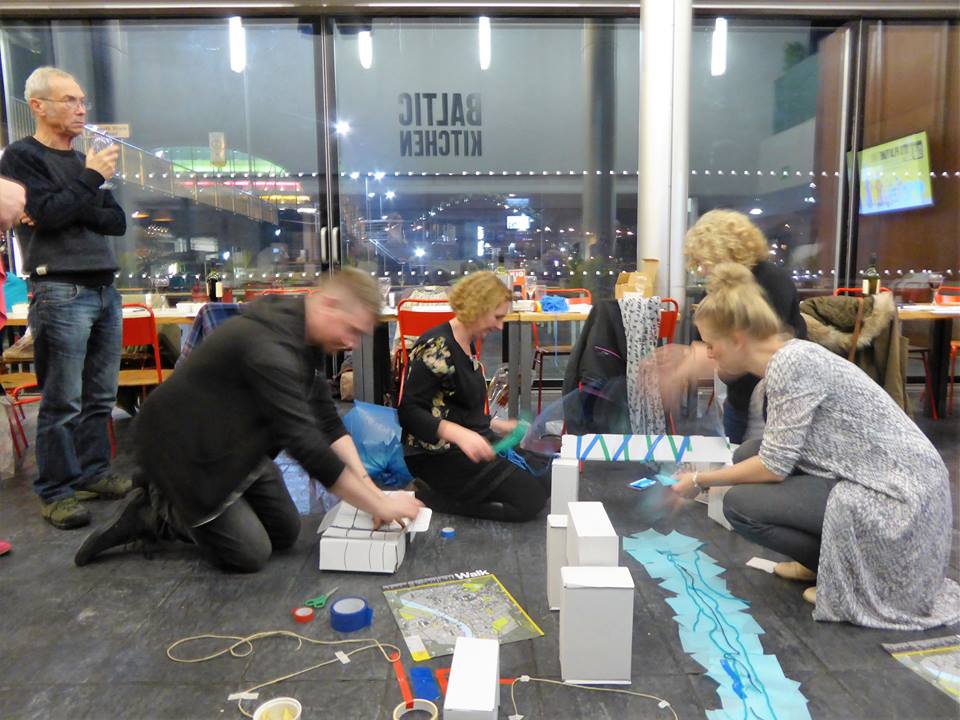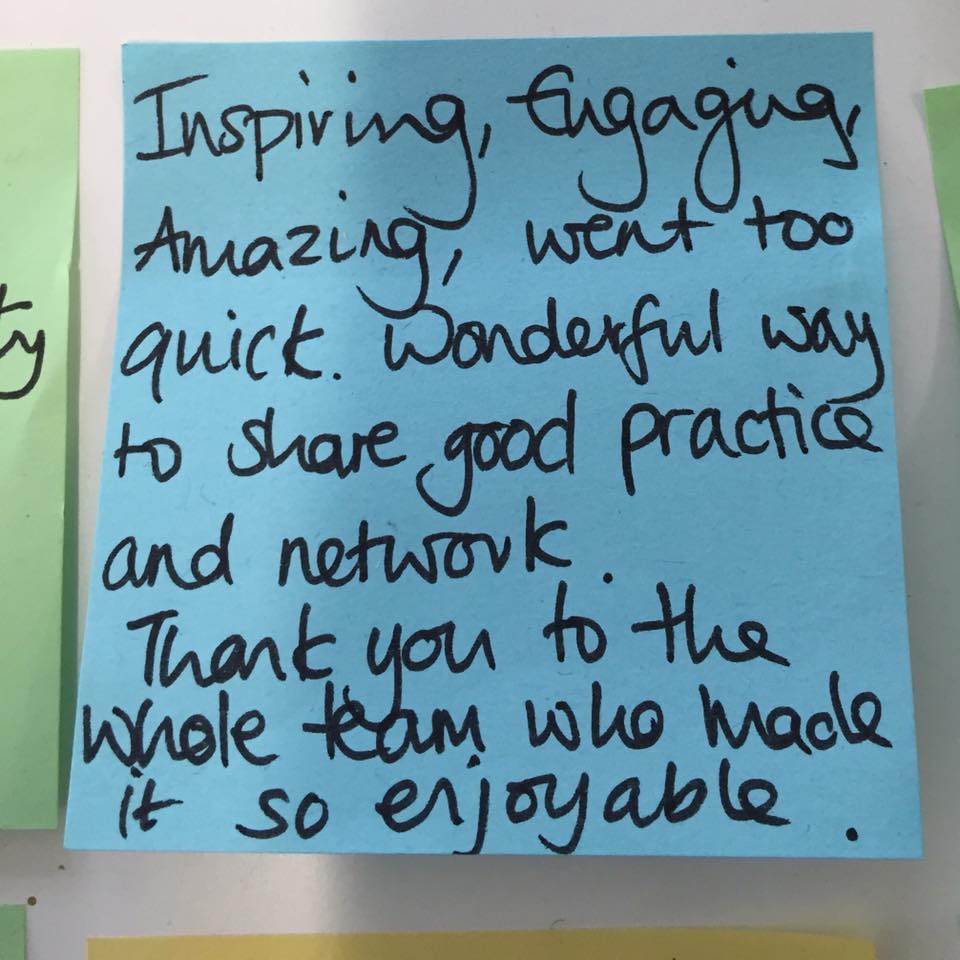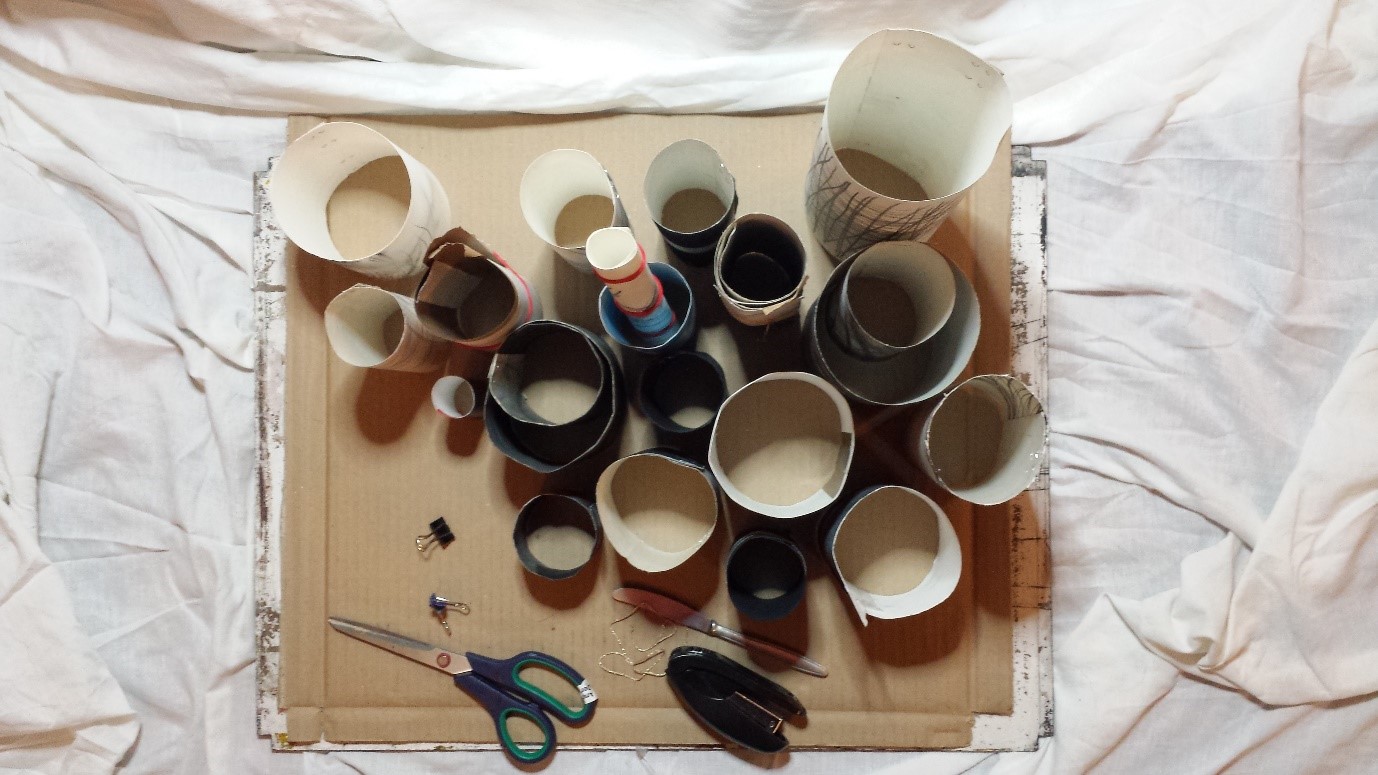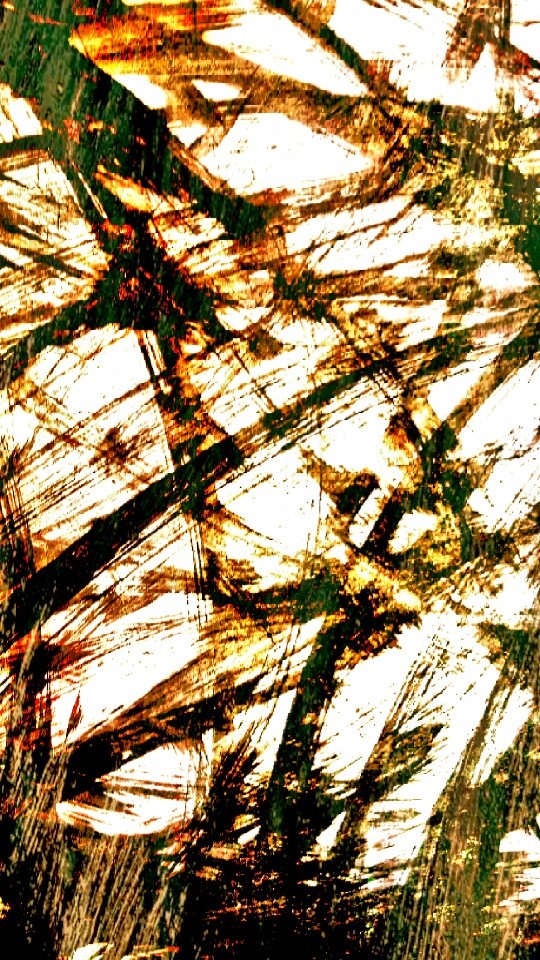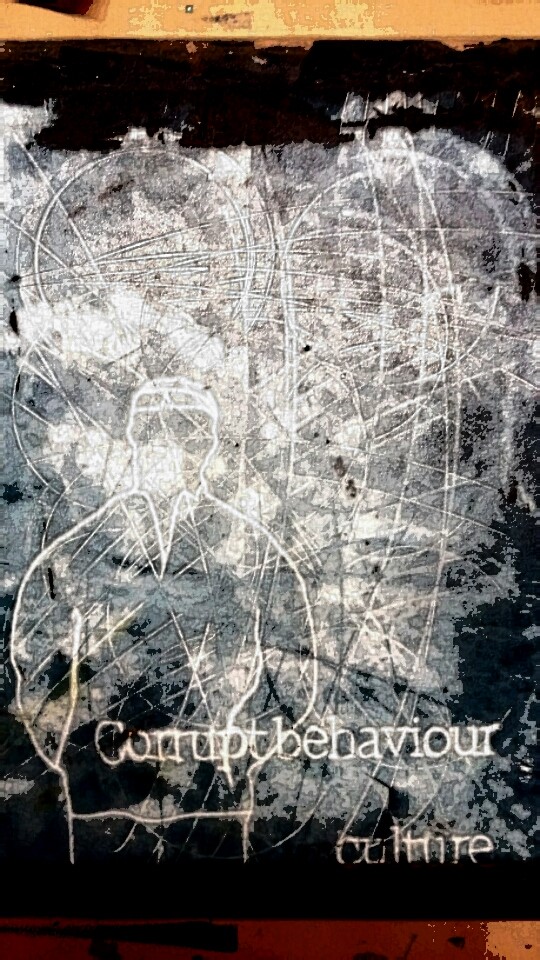Tell us a bit about yourself
I went to Glasgow School of Art, got a BA Hons Embroidered & Woven Textiles. I didn't really do the fabric thing, much to their disgust and my joy, as I made latex and ceramic heads, all based on the distorted portraits of my friends and family, how I really saw them!
Then I was meant to have a job with Jim Henson, alas the recession came. Ended up being a community art tutor and doing loads of art clubs for social services and SEN adults in galleries. I completely loved working with SEN, so decided to train as a teacher, which eventually led me to working in the North East of England in a SEN school. The first couple of years of teaching, I still managed to have exhibitions around the UK, also finding time to learn Photography (darkroom) and continue to develop my love of Life Drawing.
Years later, we (now husband and I) decided to pack it all in and go travelling, much to my dad’s complete and utter horror! After an amazing time out, seeing and experiencing awesome places and meeting life time pals, we decided it was time to come back to the land of reality and work (plus it kept my dad happy!)
Sucked back into the world of teaching, my own art work was pretty non-existent, just loads of demo/samples for work - ended up being a "jack of all trades".
Eventually, and I really don't know why I didn't hear about it sooner, I discovered NEATEN and NSEAD, this opened doors up into a whole new way of working/thinking, and most importantly my work/life balance. I started to think about attempting to make my own work again and this is where I first heard about Sketchbook Circle. So last year, I decided it would be good to have a challenge and work small and push myself into the unknown world of collaboration. Unfortunately one of my partnerships completely broke down right at the beginning, but luckily the other one was successful and we managed to develop a good creative conversation.
I am now about to start my 24th year of teaching, and I can honestly say that I feel revitalised, and would now consider myself to be known as an artist teacher. That is all down to being involved with NEATEN, NSEAD and of course sketchbook circle, which has allowed me to bring experimental fun back into my own art practice.
What / who do you use as inspiration for your work?
Basically, anything that is around me may be used for inspiration. This digital circle started with photographs of my trainers and pavements, which I thought was a good excuse for breathing stops as I am doing some running challenges this year. It has further developed on into street and urban landscapes and just recently influenced by a Radiohead gig I was recently at.
I regularly carry my camera around and recently just got a Lomography fisheye (film), which has allowed me to experiment with double exposure. This has then led me back into the darkroom to experiment further with more alternative photography techniques.
How long have you been working with digital processes, and what brought you to it?
Having recently just started teaching GCSE Photography, I knew that I would need to brush up on my Photoshop skills (digital darkroom), fed up being one step ahead of my pupils. So, when the opportunity got announced to do a digital circle, I decided that I would give myself a challenge and branch out into the unknown world of digital and tackle my lack of digital/computer skills.
Do you have favourite apps/software/hardware that you use?
I've mainly been using my laptop with Adobe Photoshop for most of this circle(iPad at the side with YouTube on). I have found the "help sheets" that Georgia has sent out to be extremely useful. Completely loved experimenting with glitches, especially when you just press play and Photoshop just does everything for you, seriously really clever!
I have just got the Procreate app, under Sarah's recommendation and hopefully will find some time this summer to experiment with this.
How has the digital circle impacted on you and your work?
Like I said earlier, it has brought the experimental fun back into my own art work, at times a cheeky glint in the eye when showing and speaking with my pupils about what I am doing. They have loved being involved in some of the work, happily posing with images over their faces. I am really fortunate to be working with Sarah, as this has also helped to push me out of my comfort zone and made me attempt to be more creative and experimental.
Does a digital project change the nature of collaboration?
For this circle, I have not purely just worked with digital, I have ended up using sewing, sculpting and adding wax into some of my digital images. I have found that we (Sarah and I) have been able to creatively bounce off each other, either being influenced by our use of images, colour or shape to help to develop a natural flow of work. The only thing that is different is how you send your work, but after getting advice, I worked out that Slack was good platform to use.
